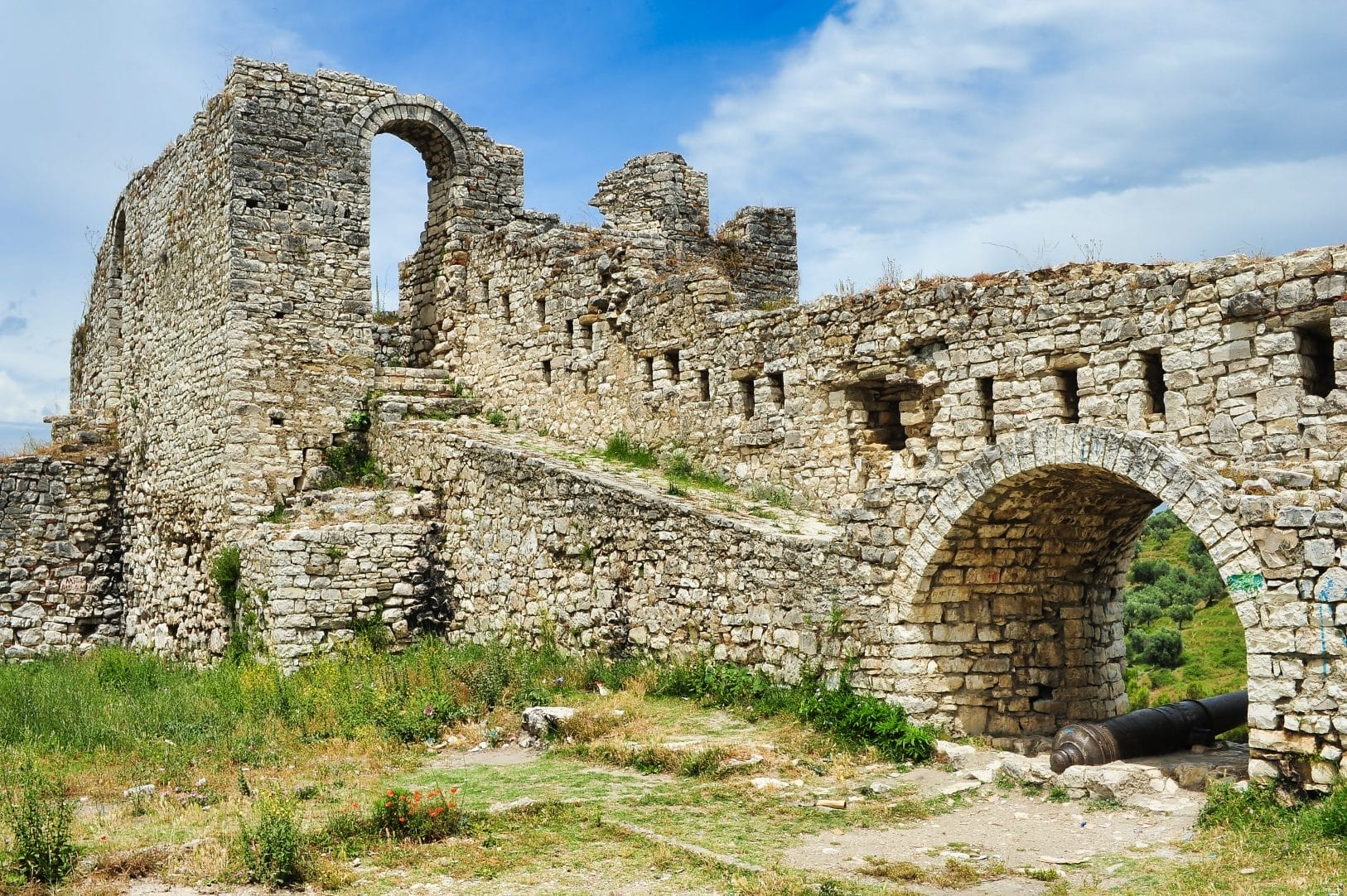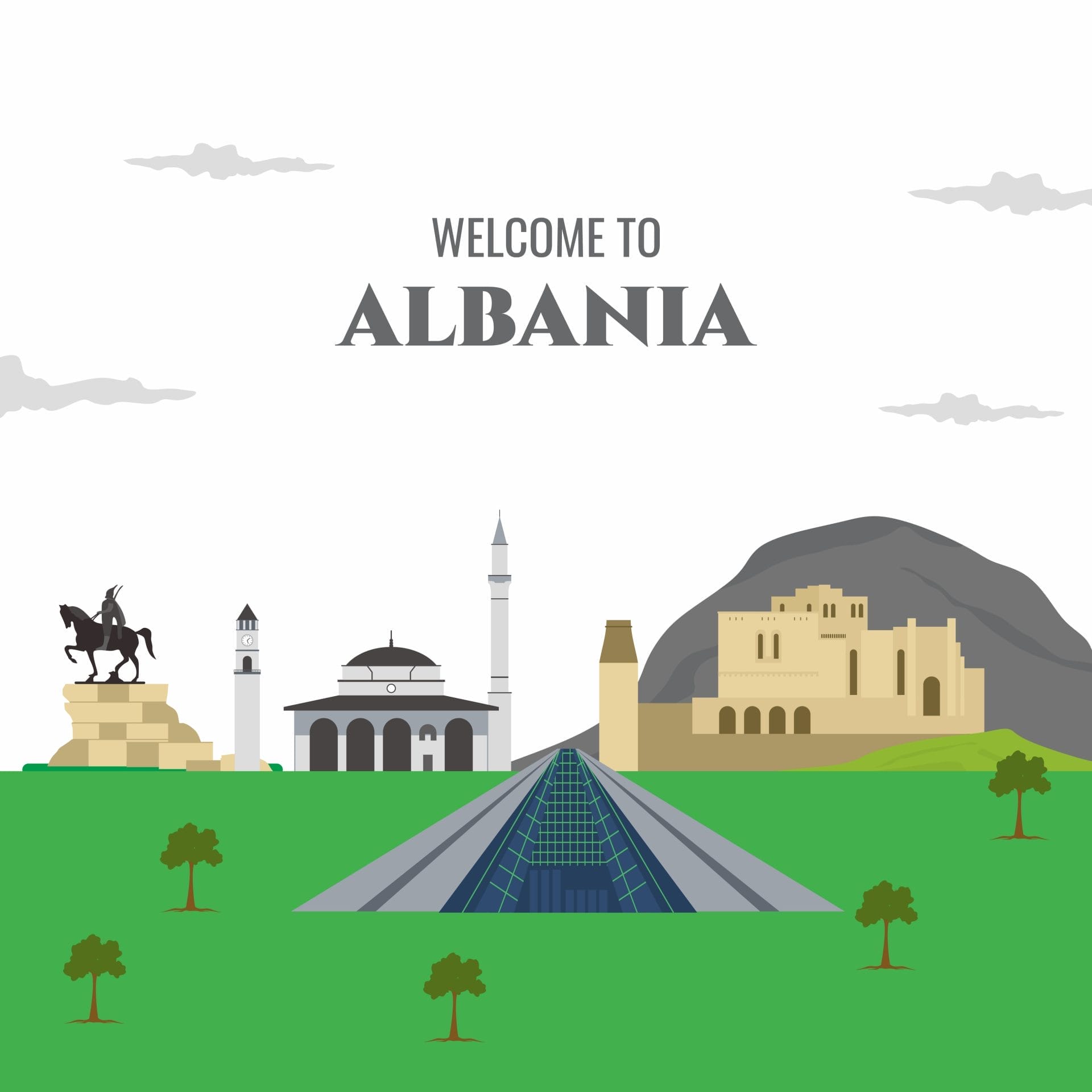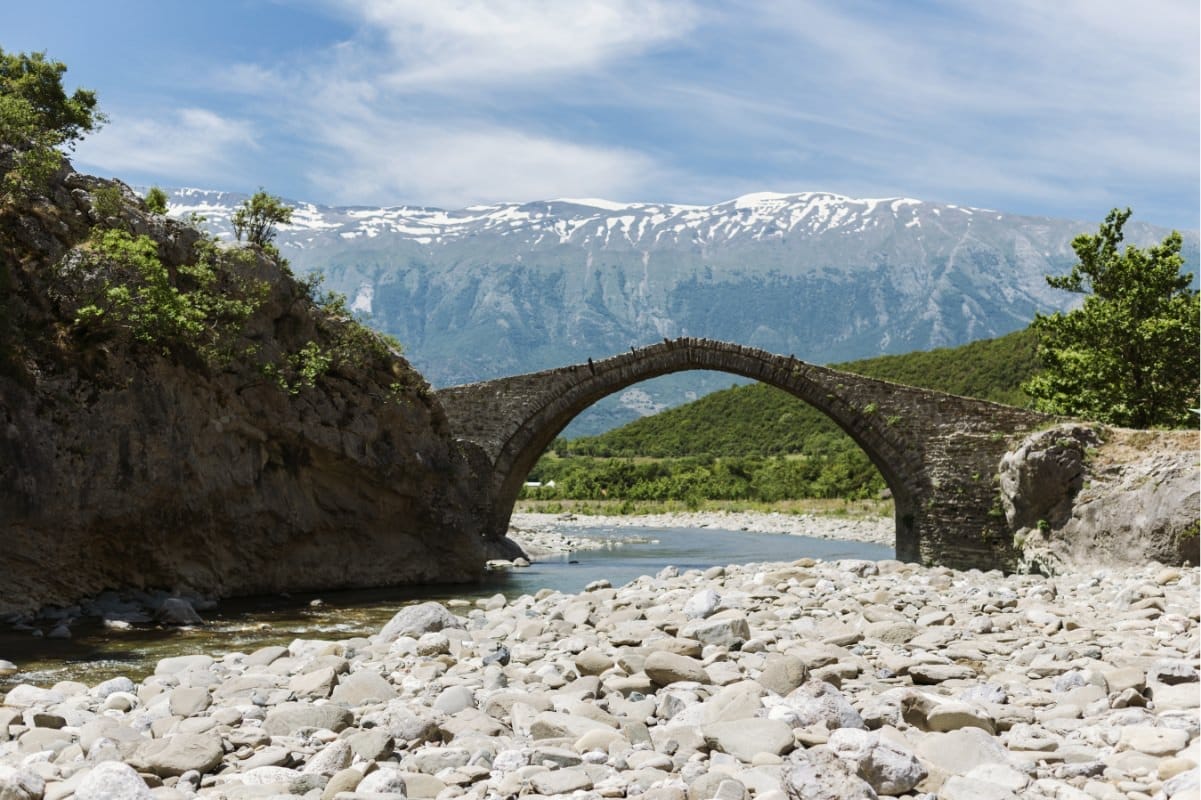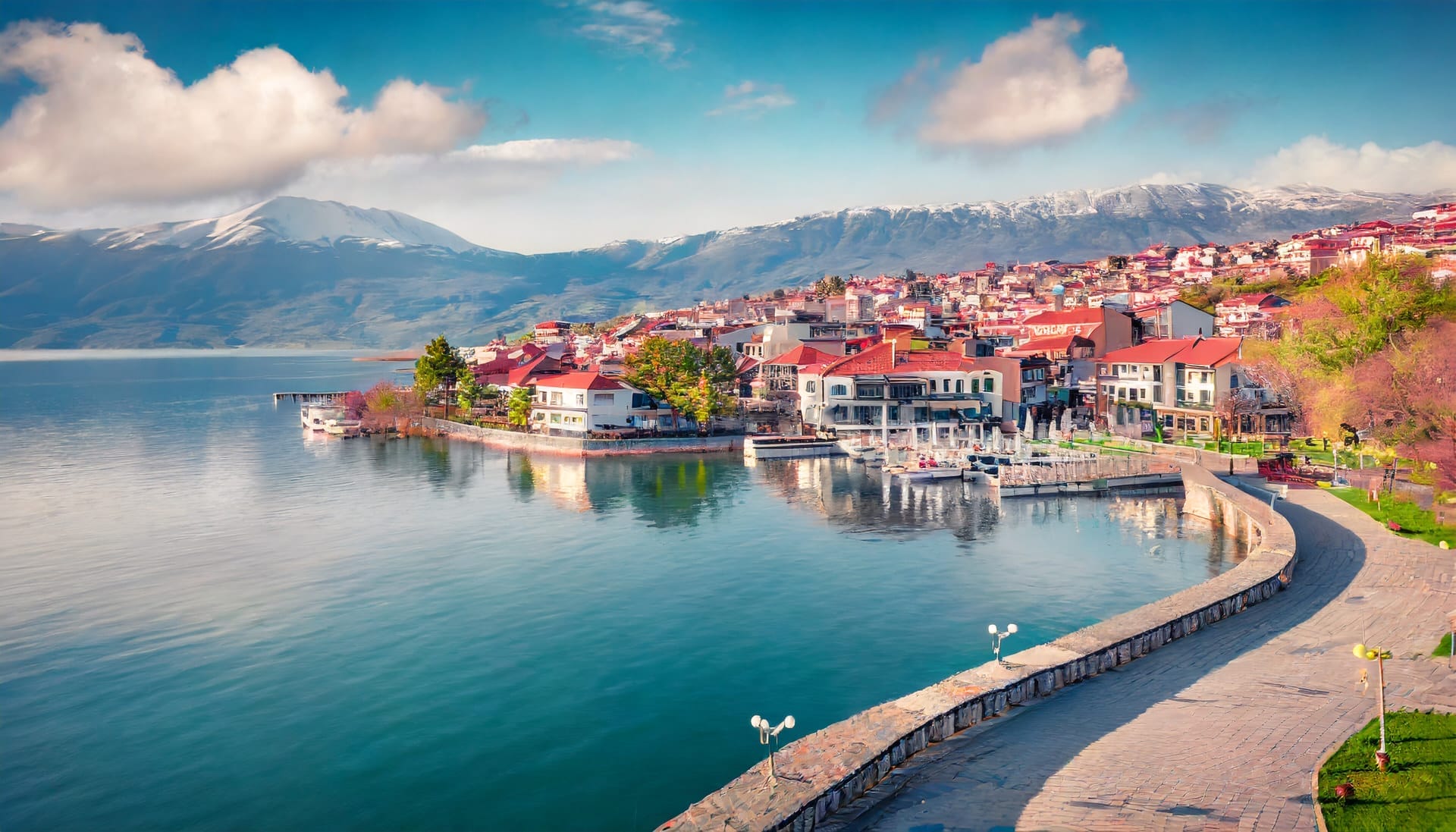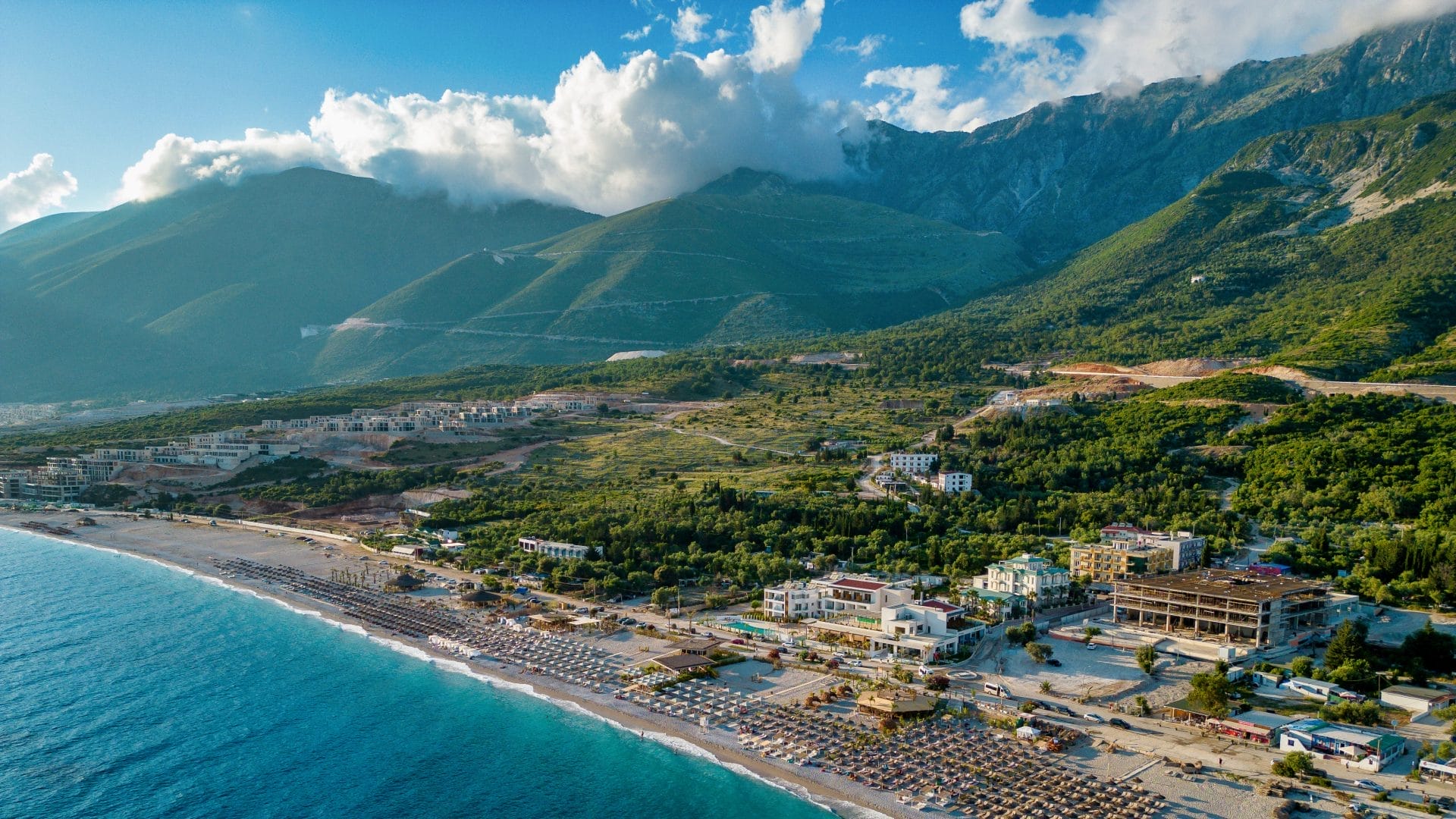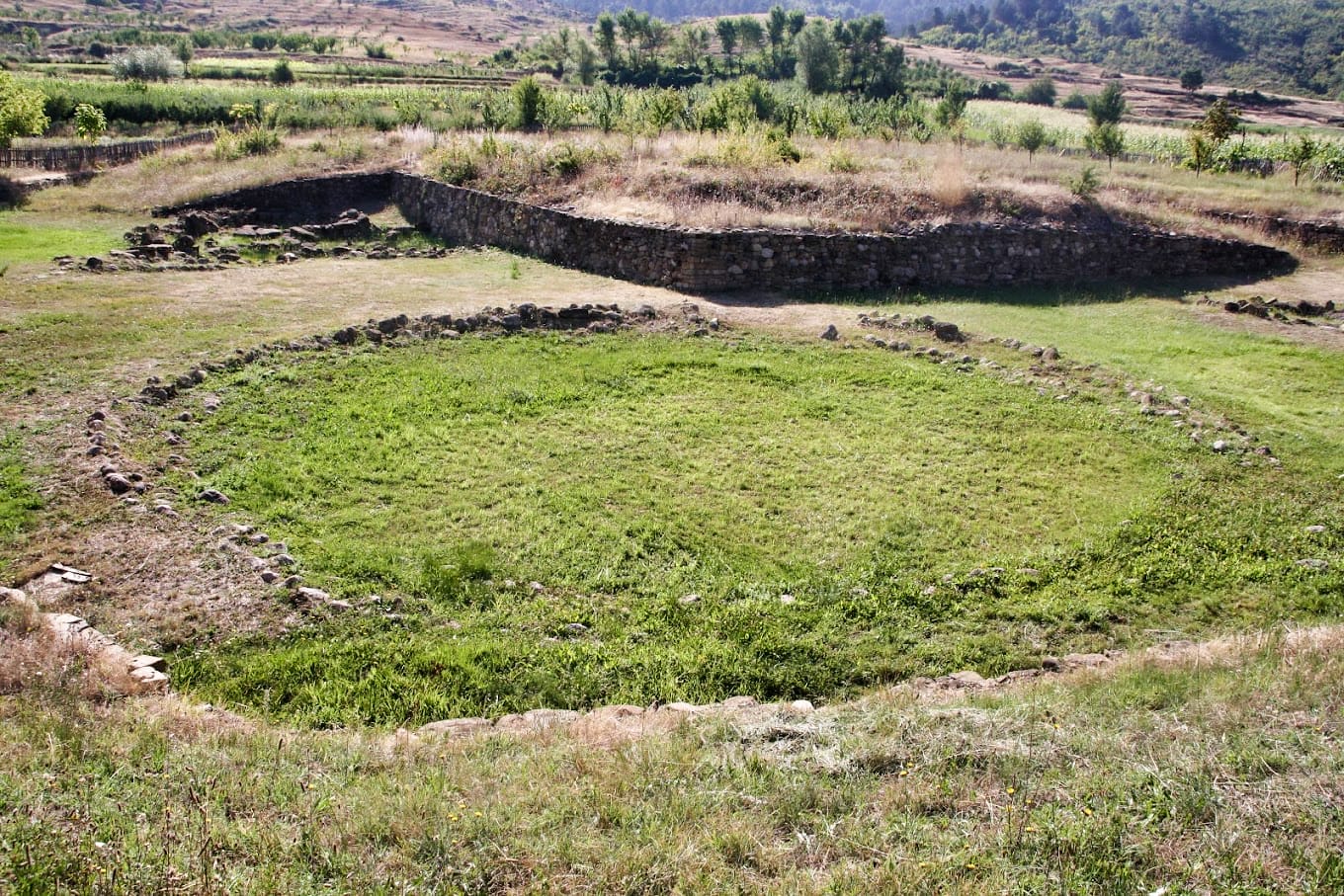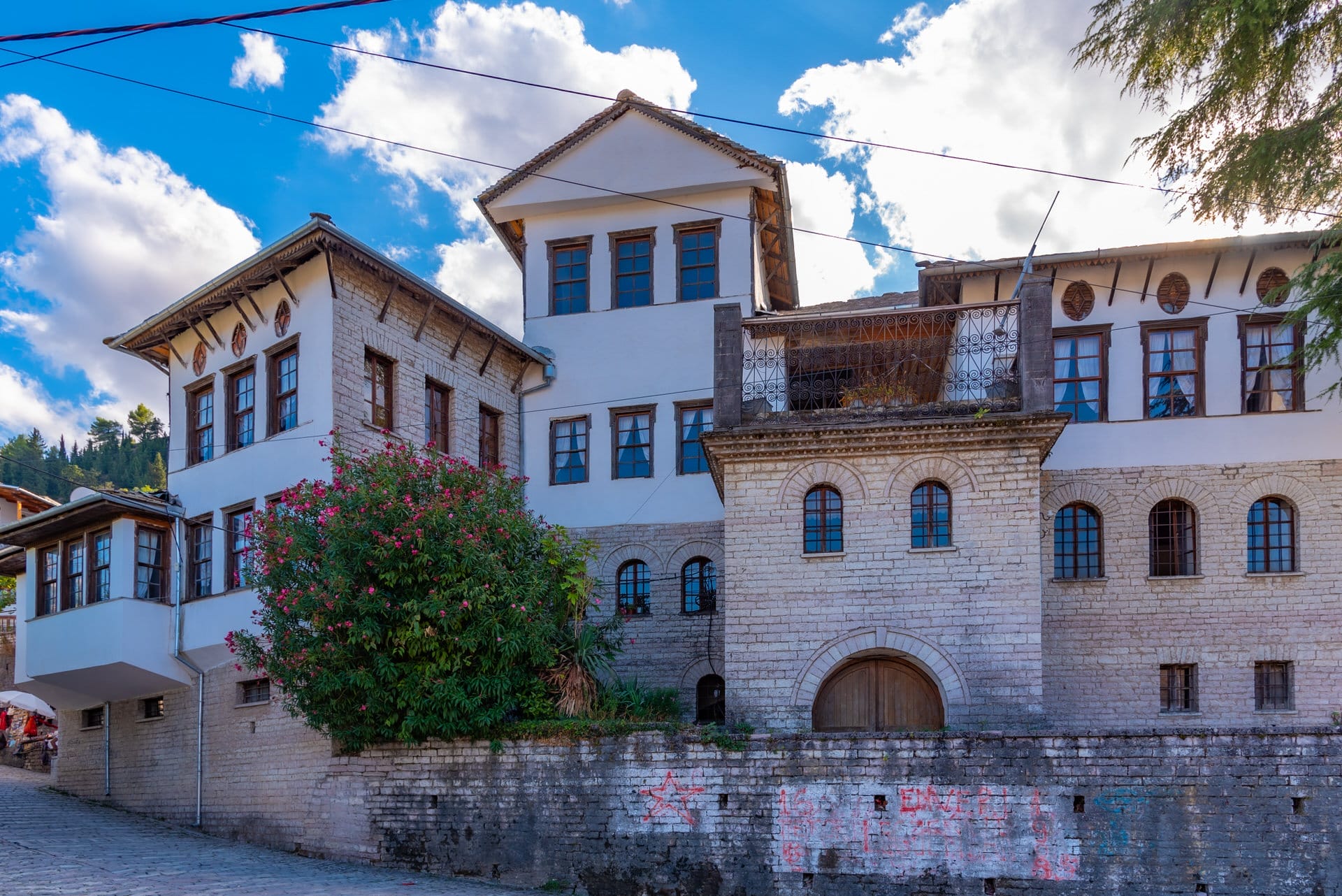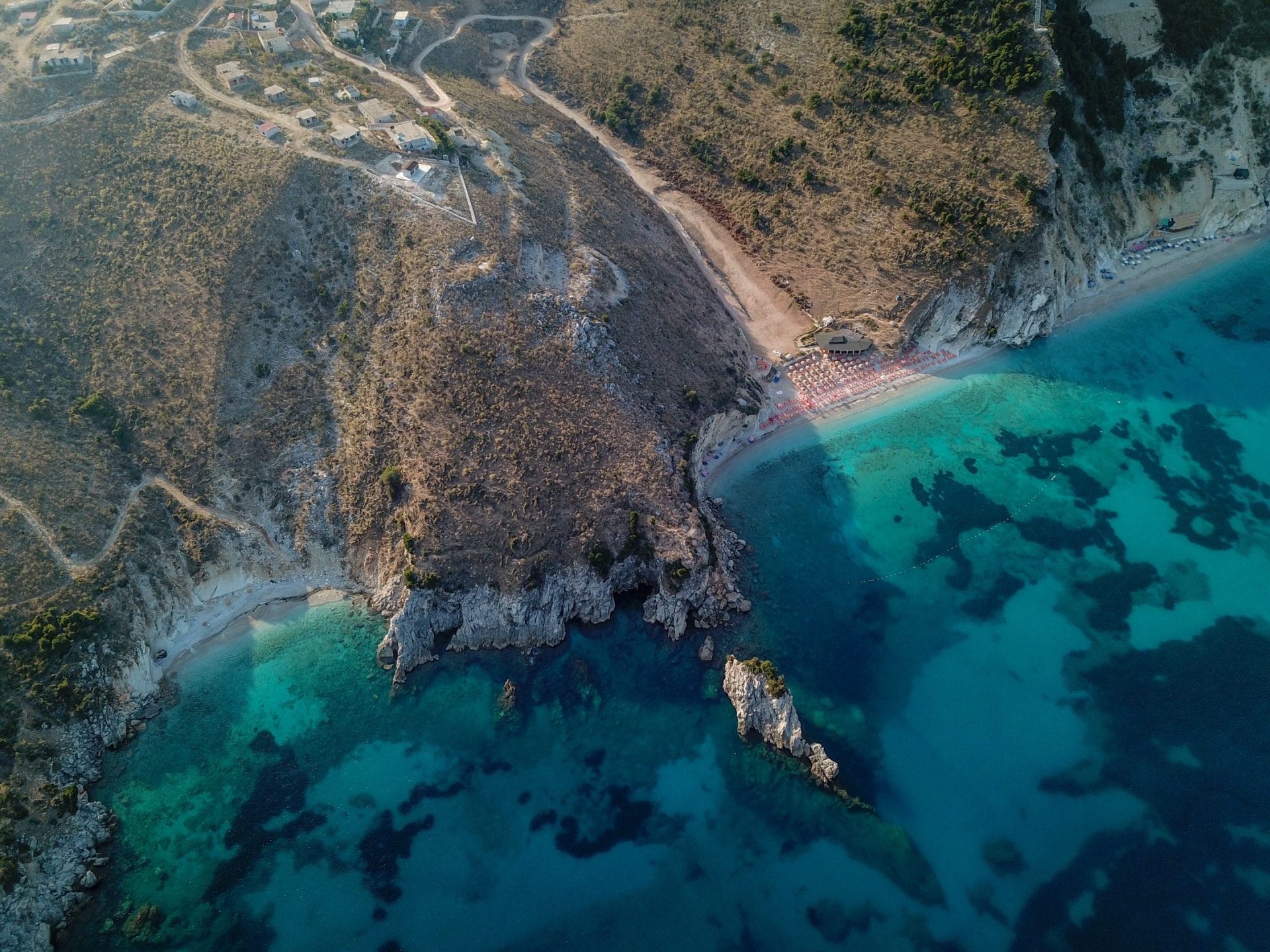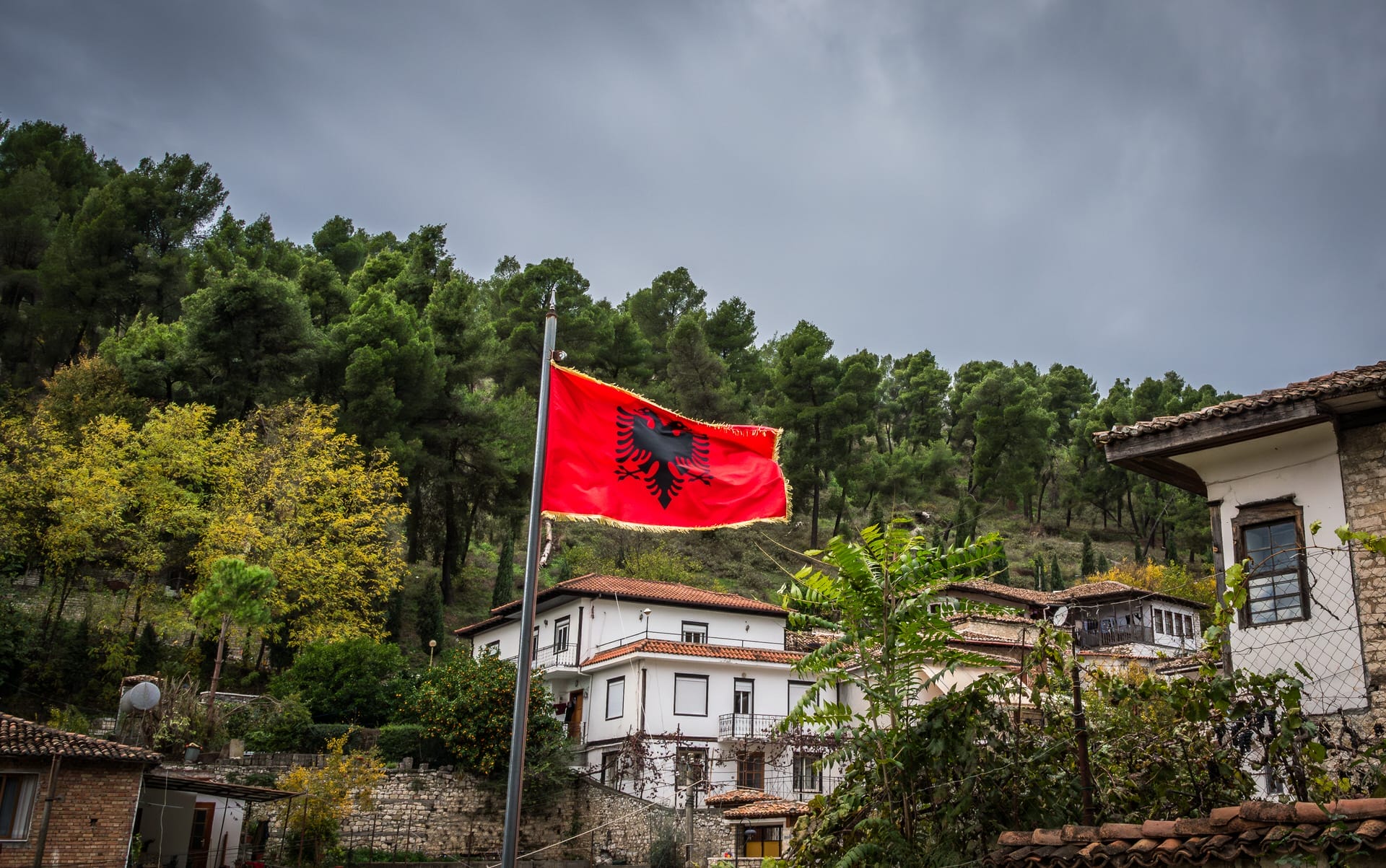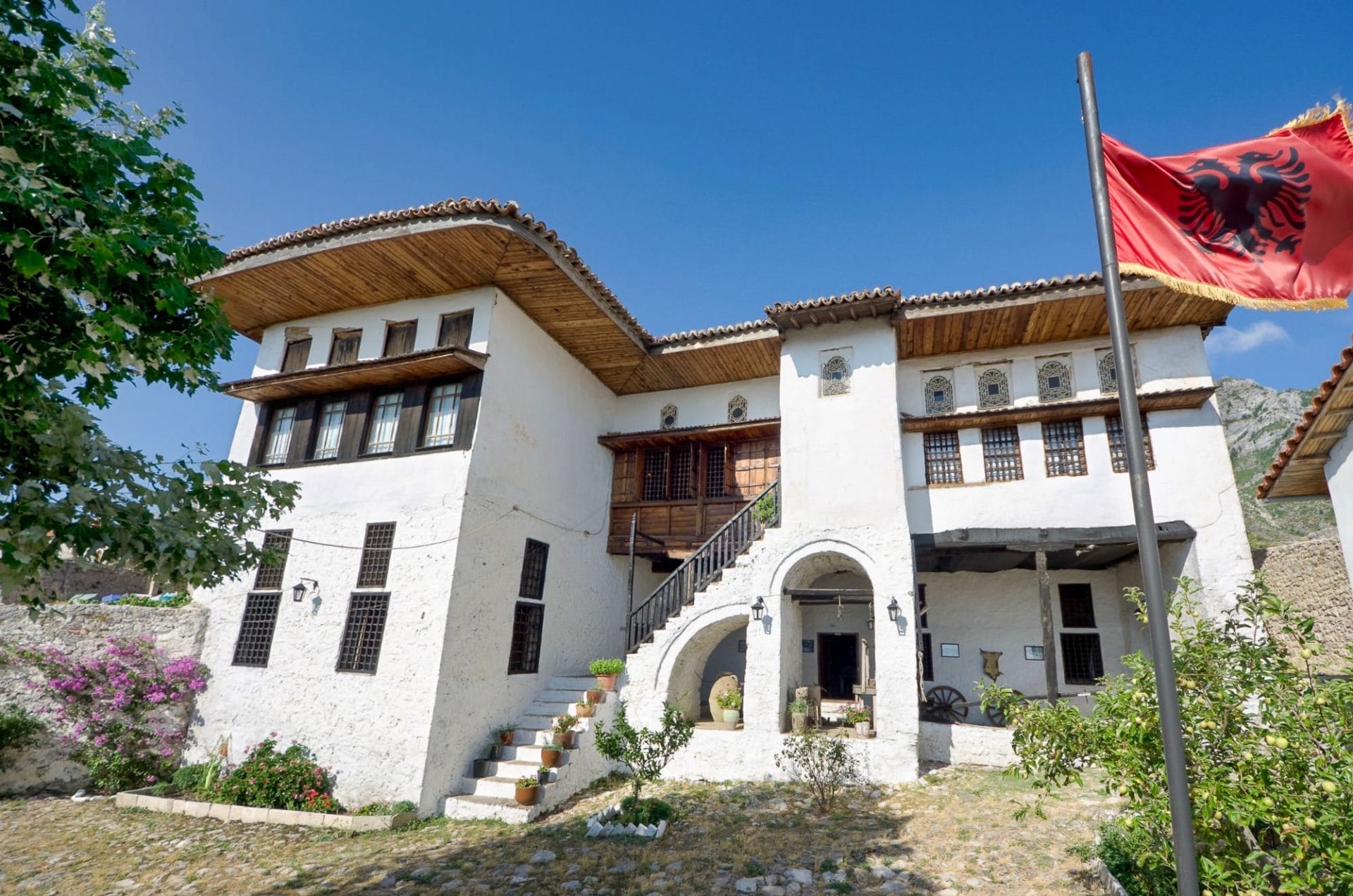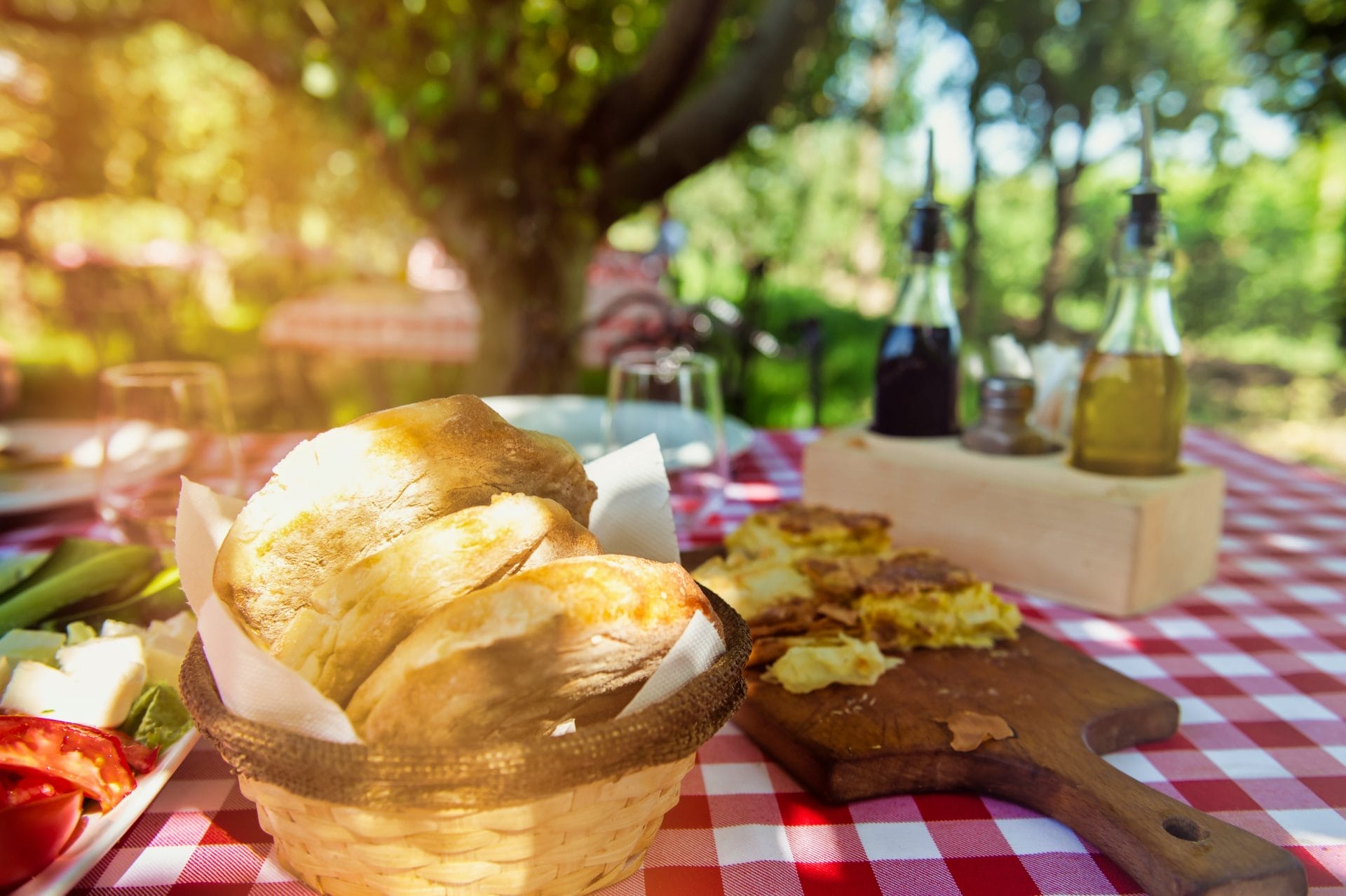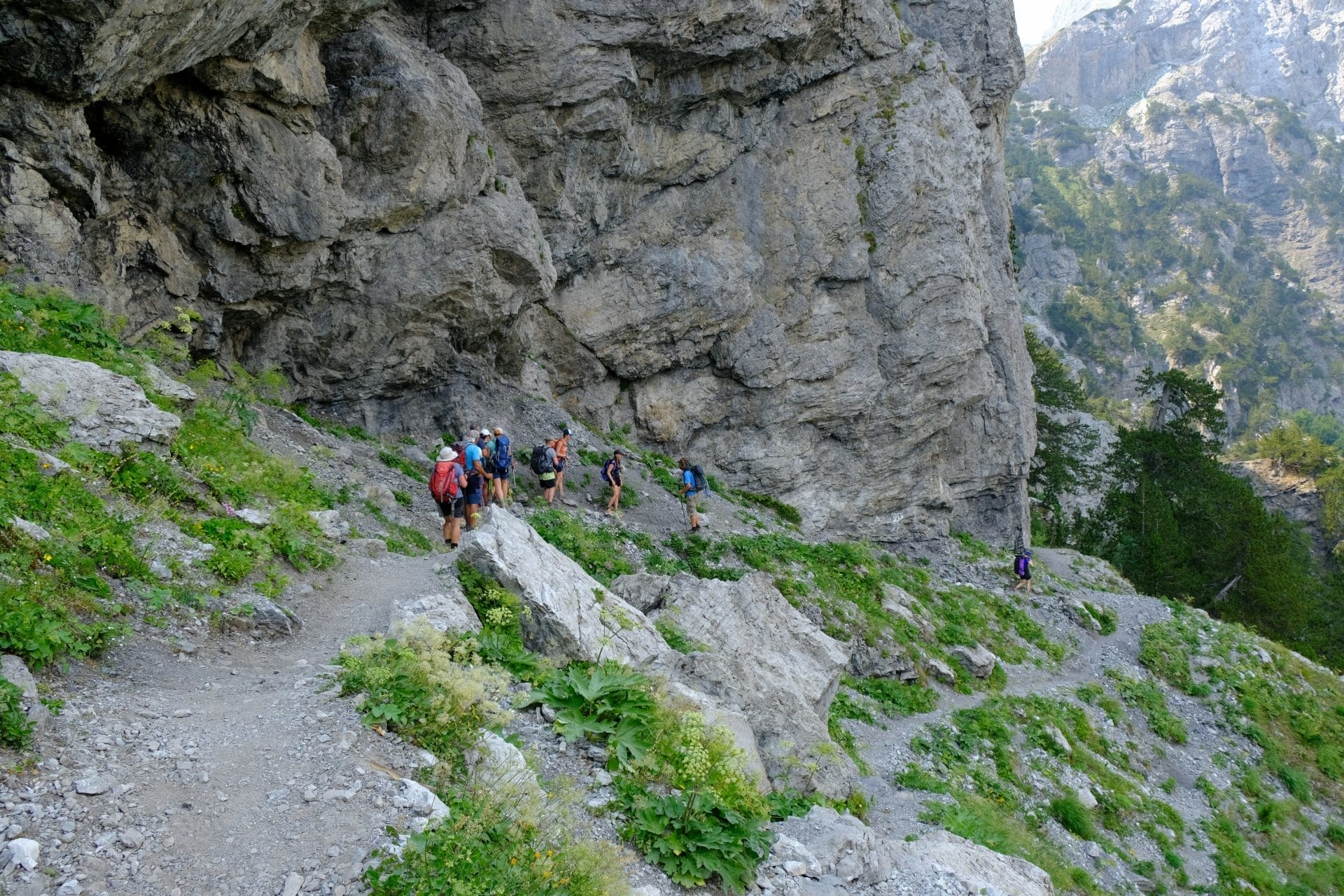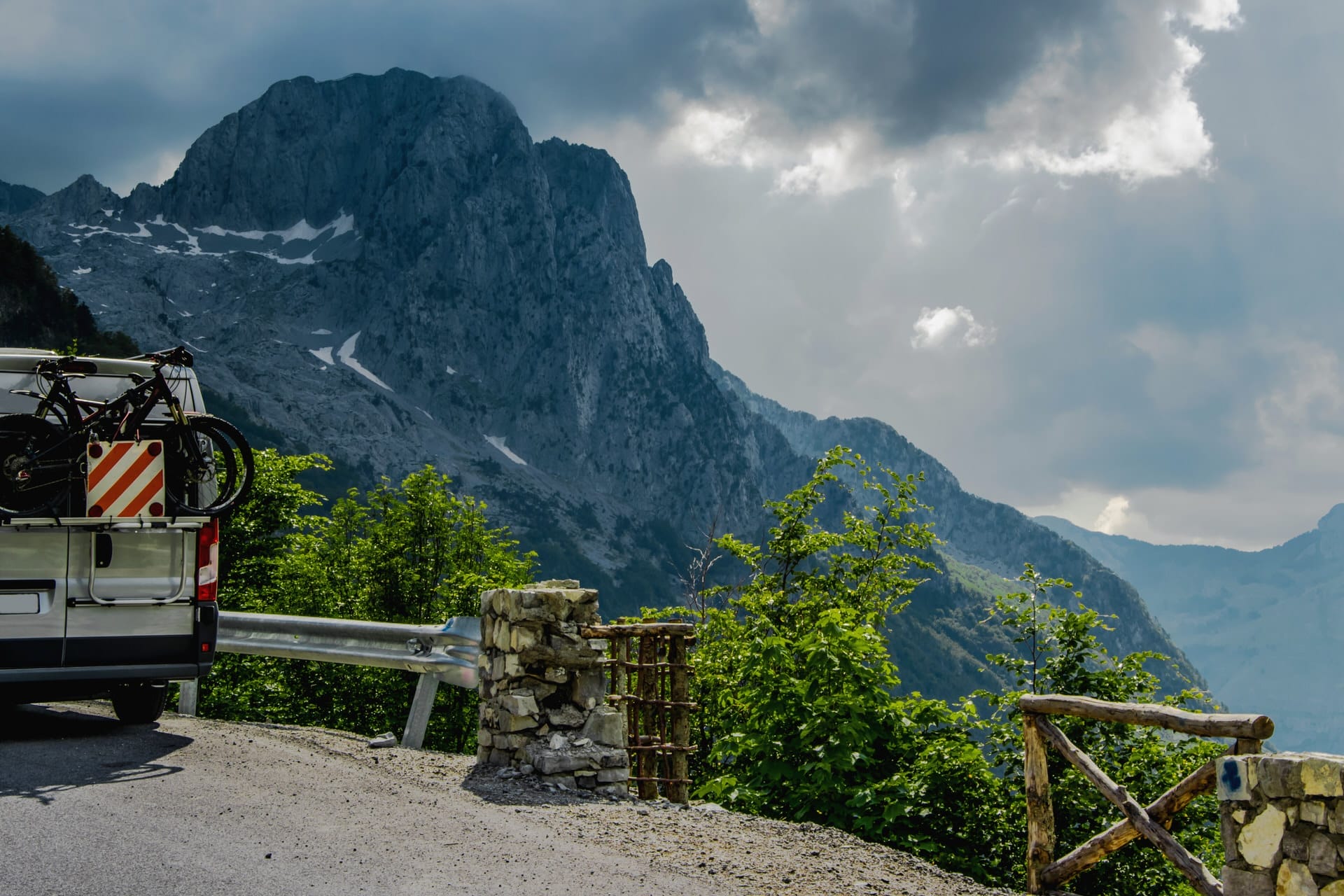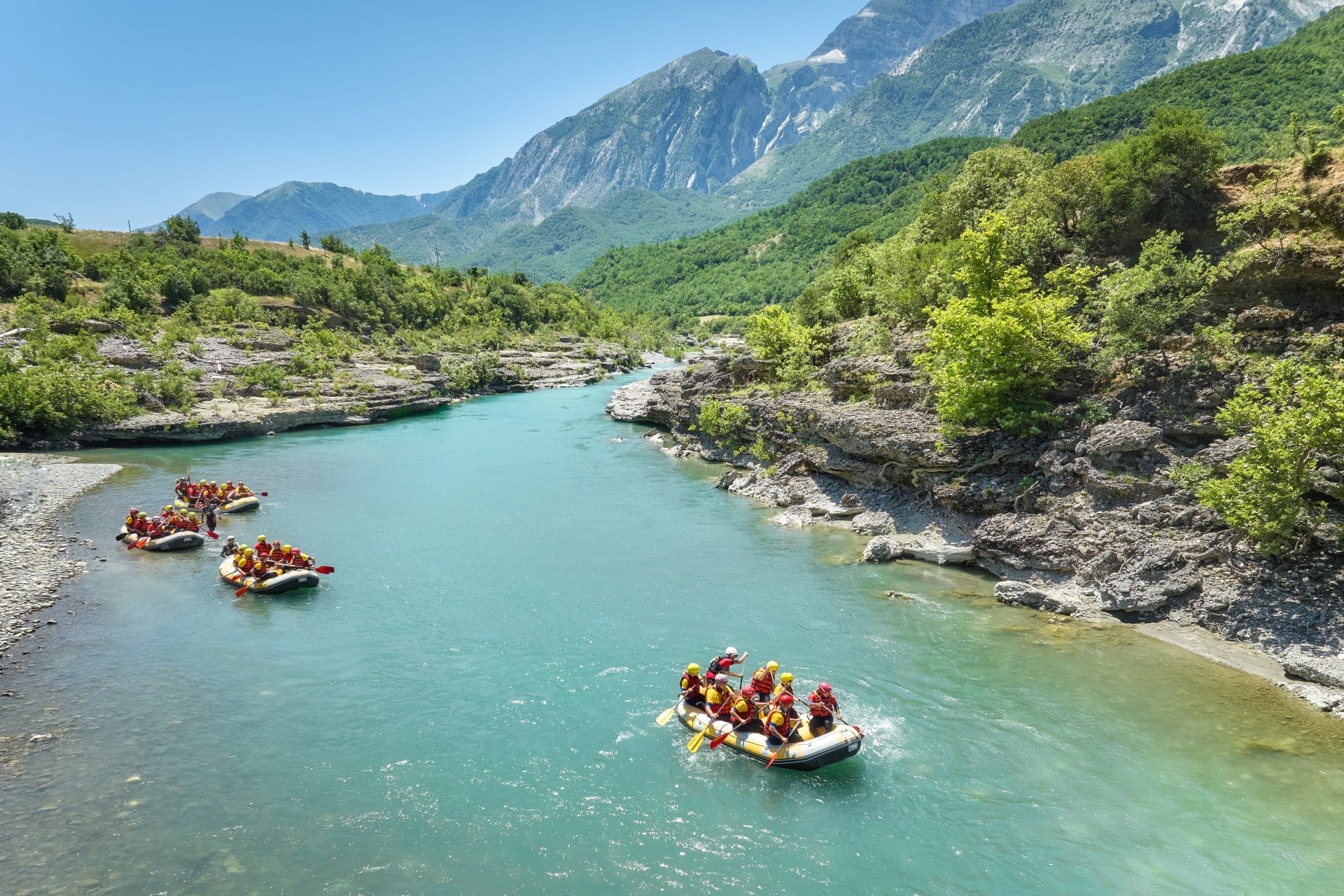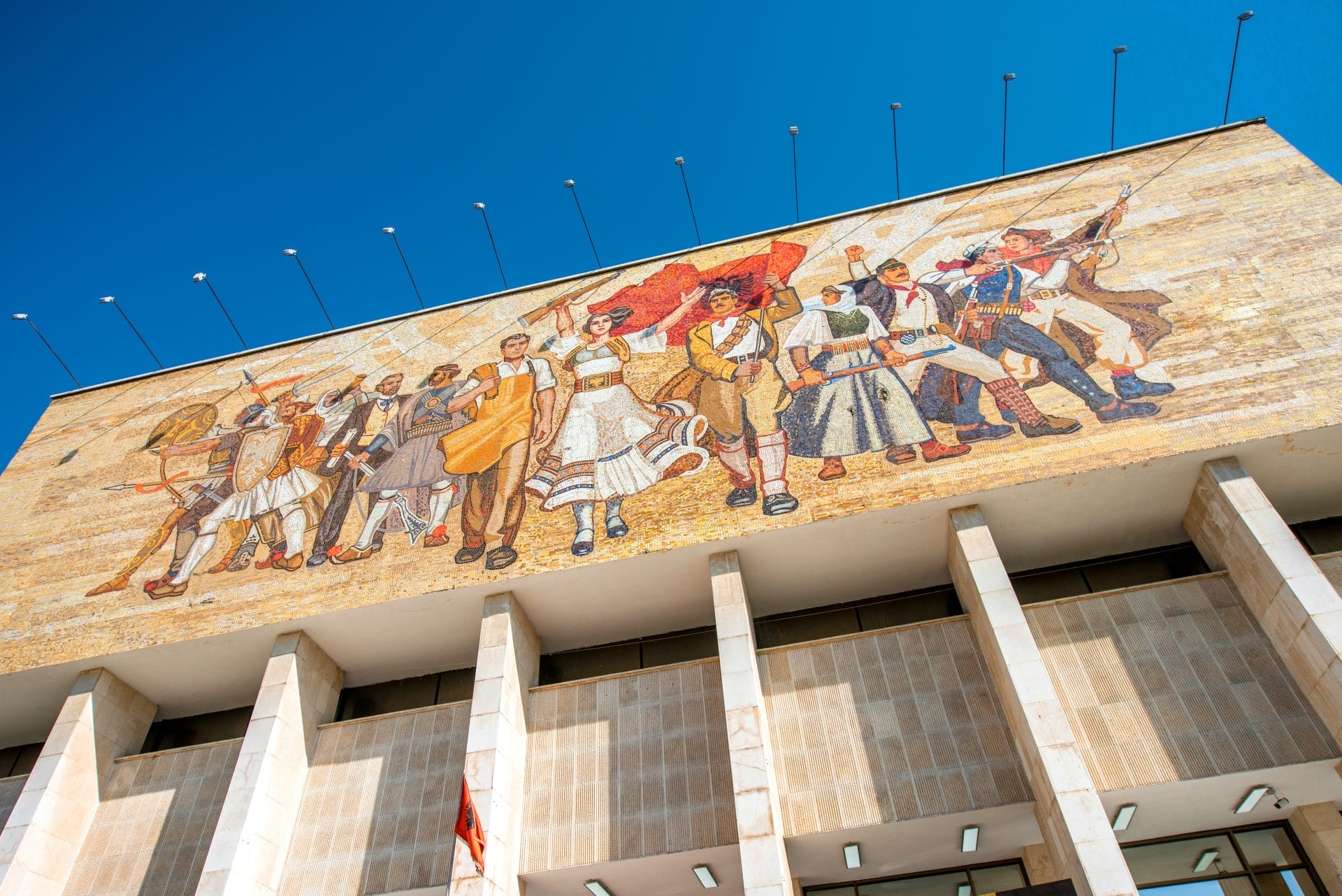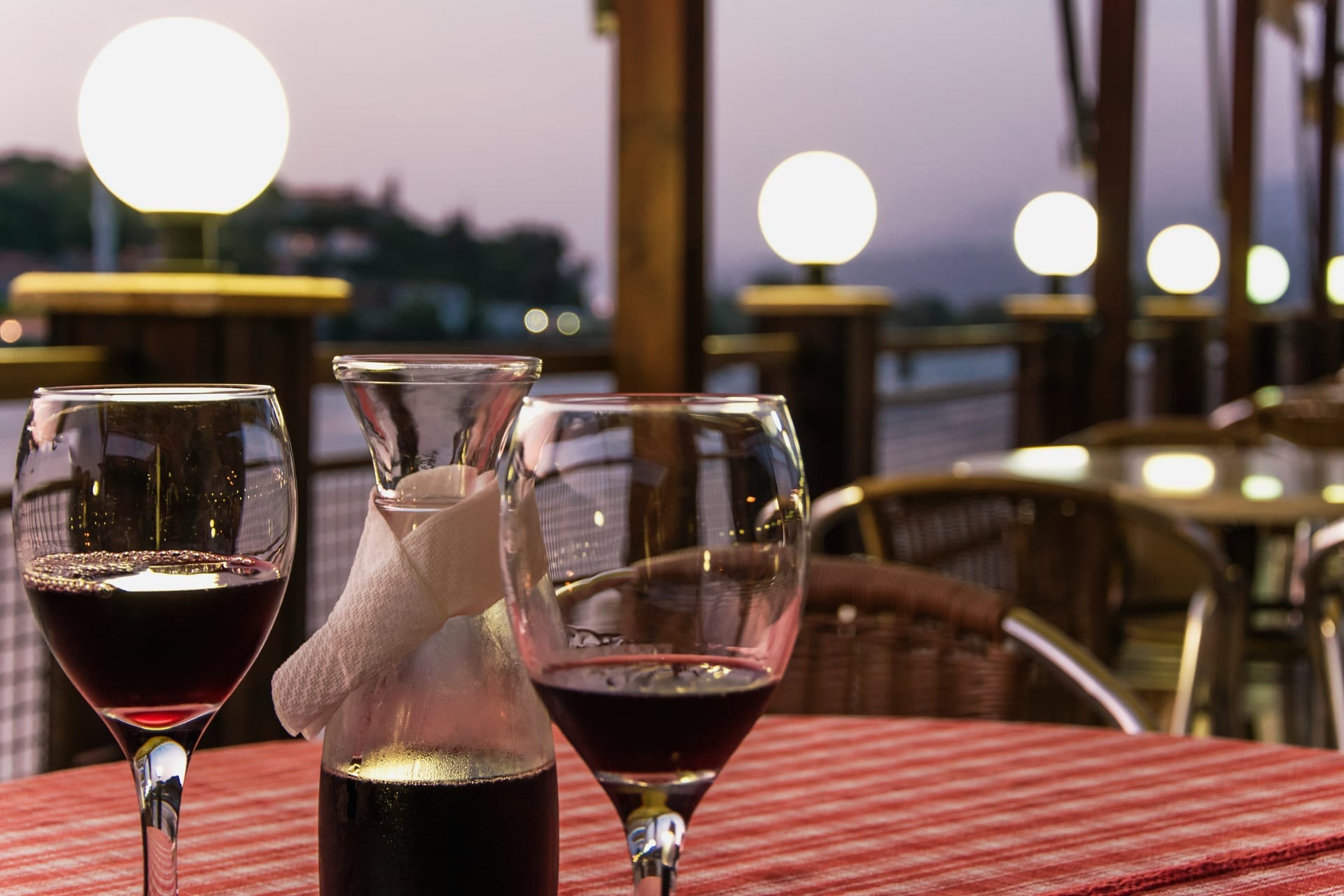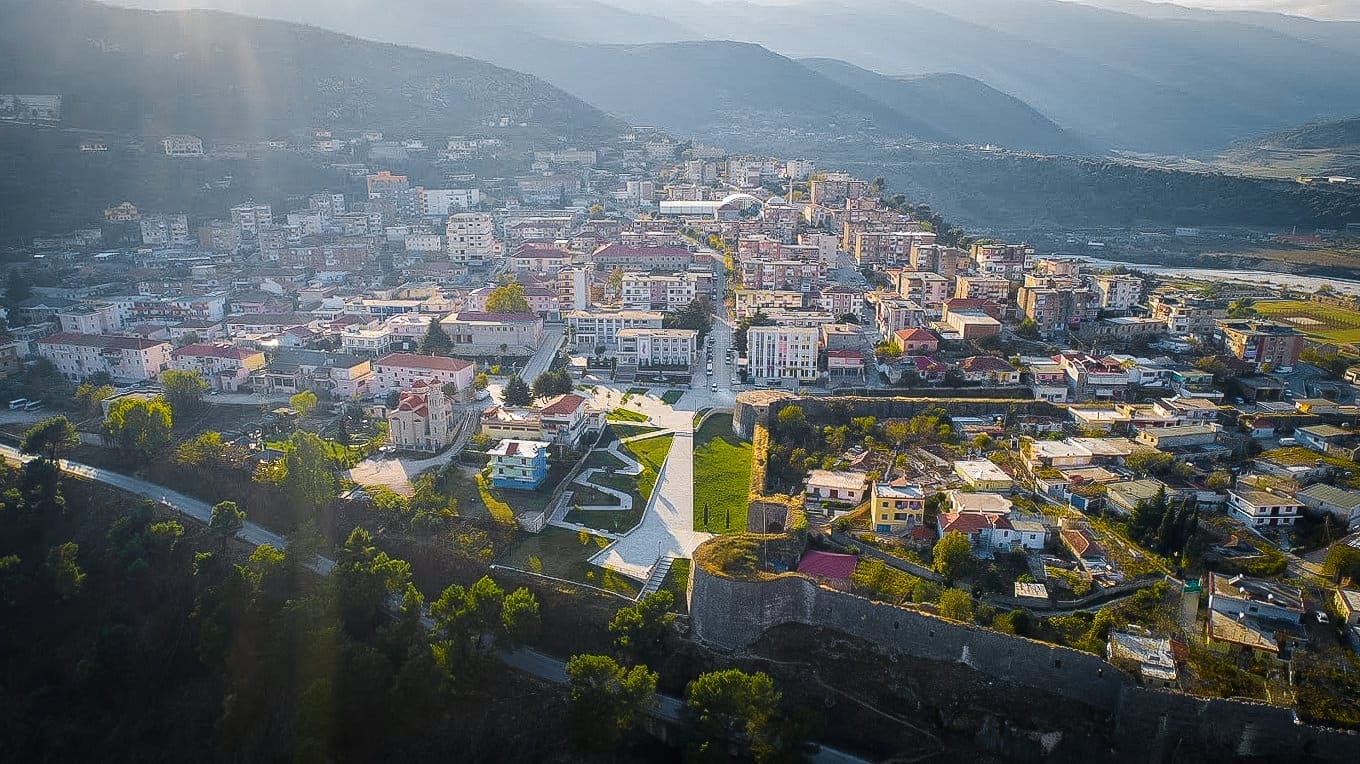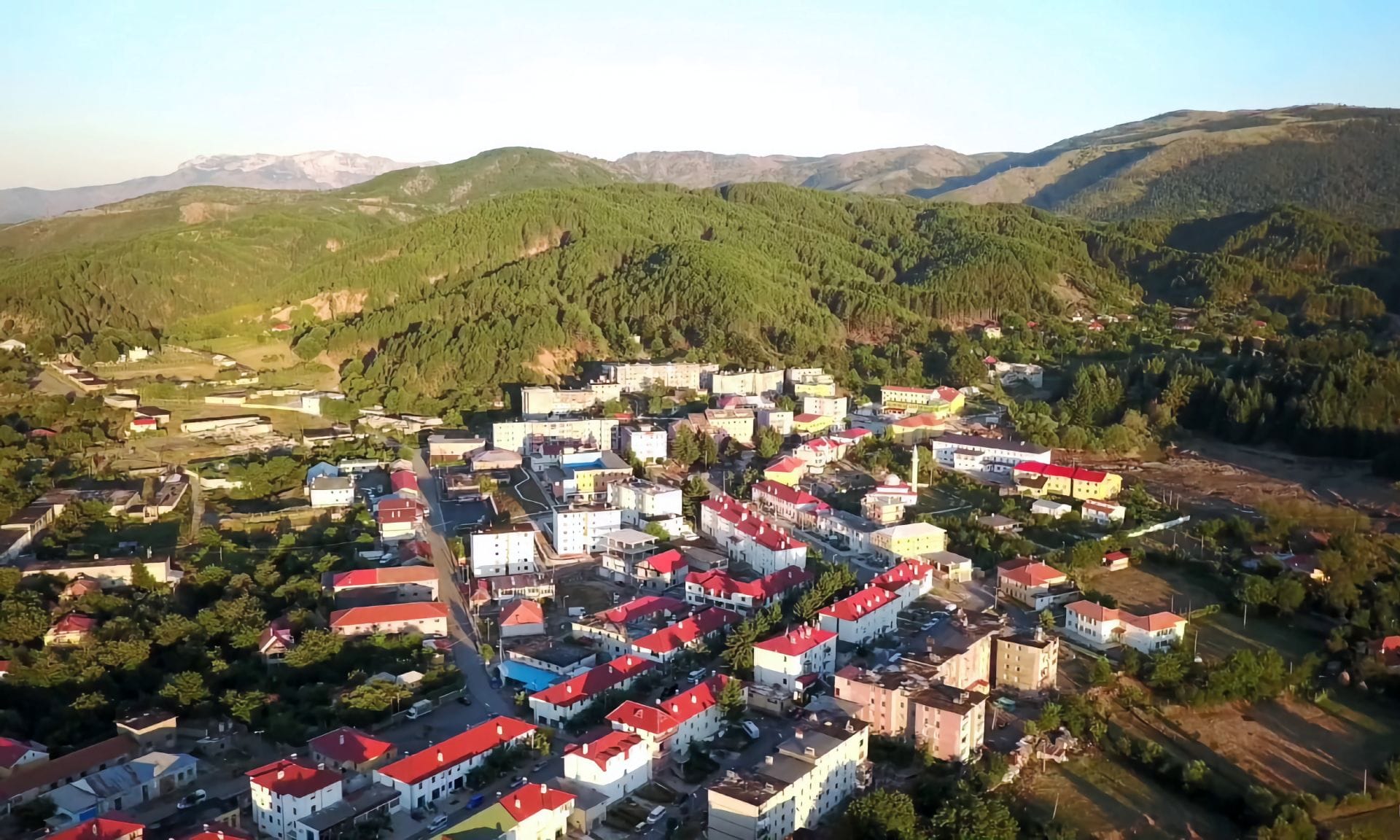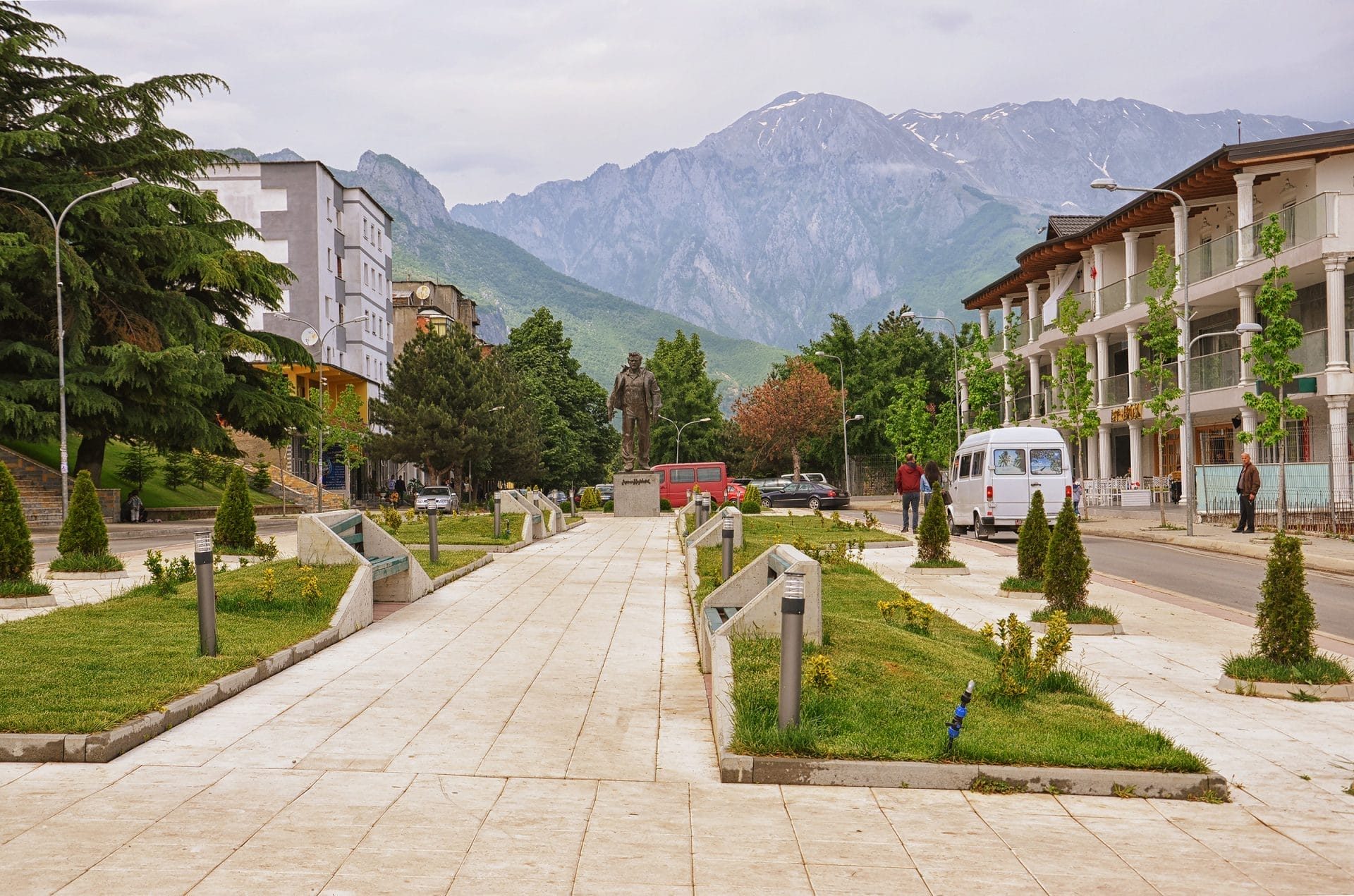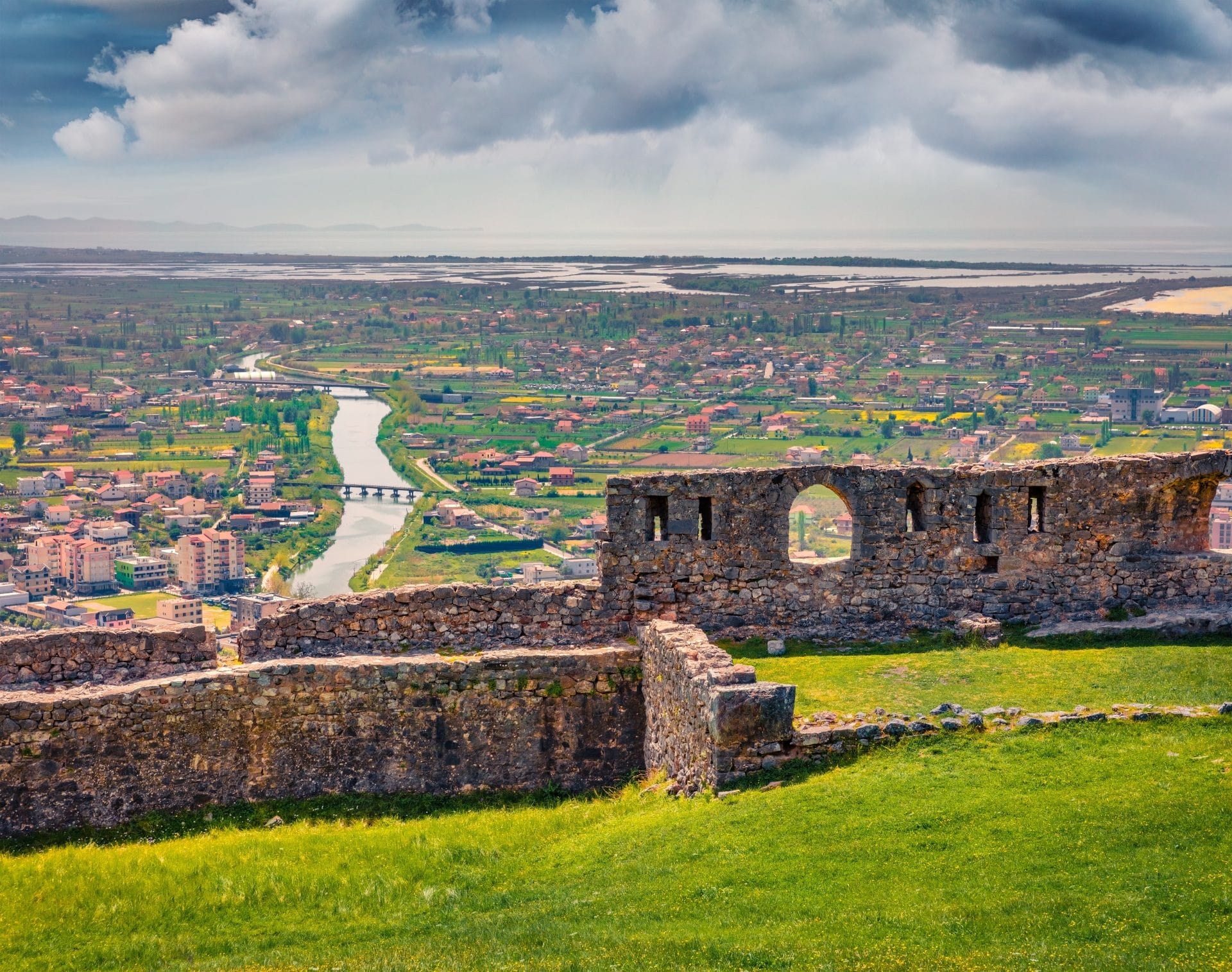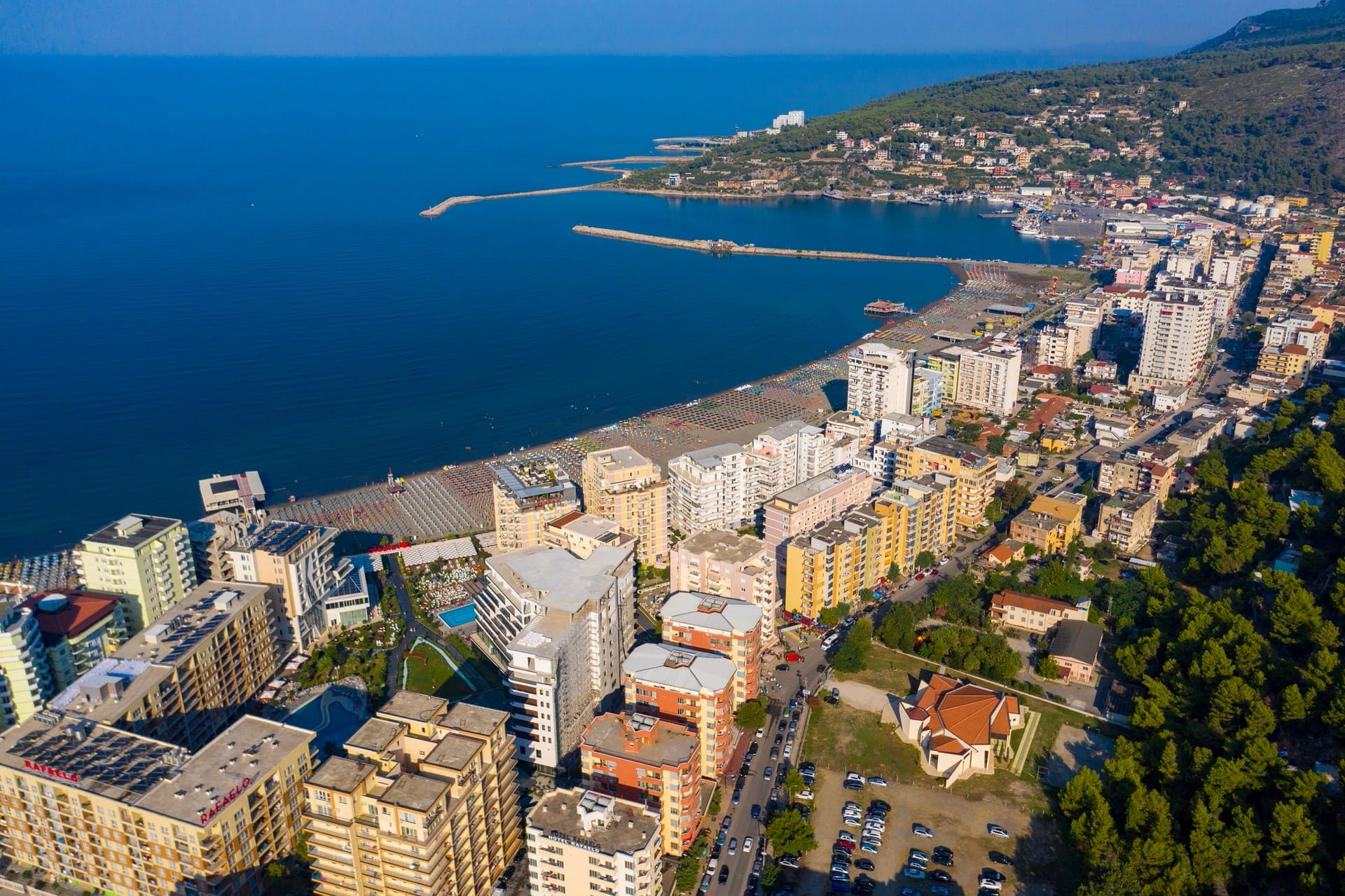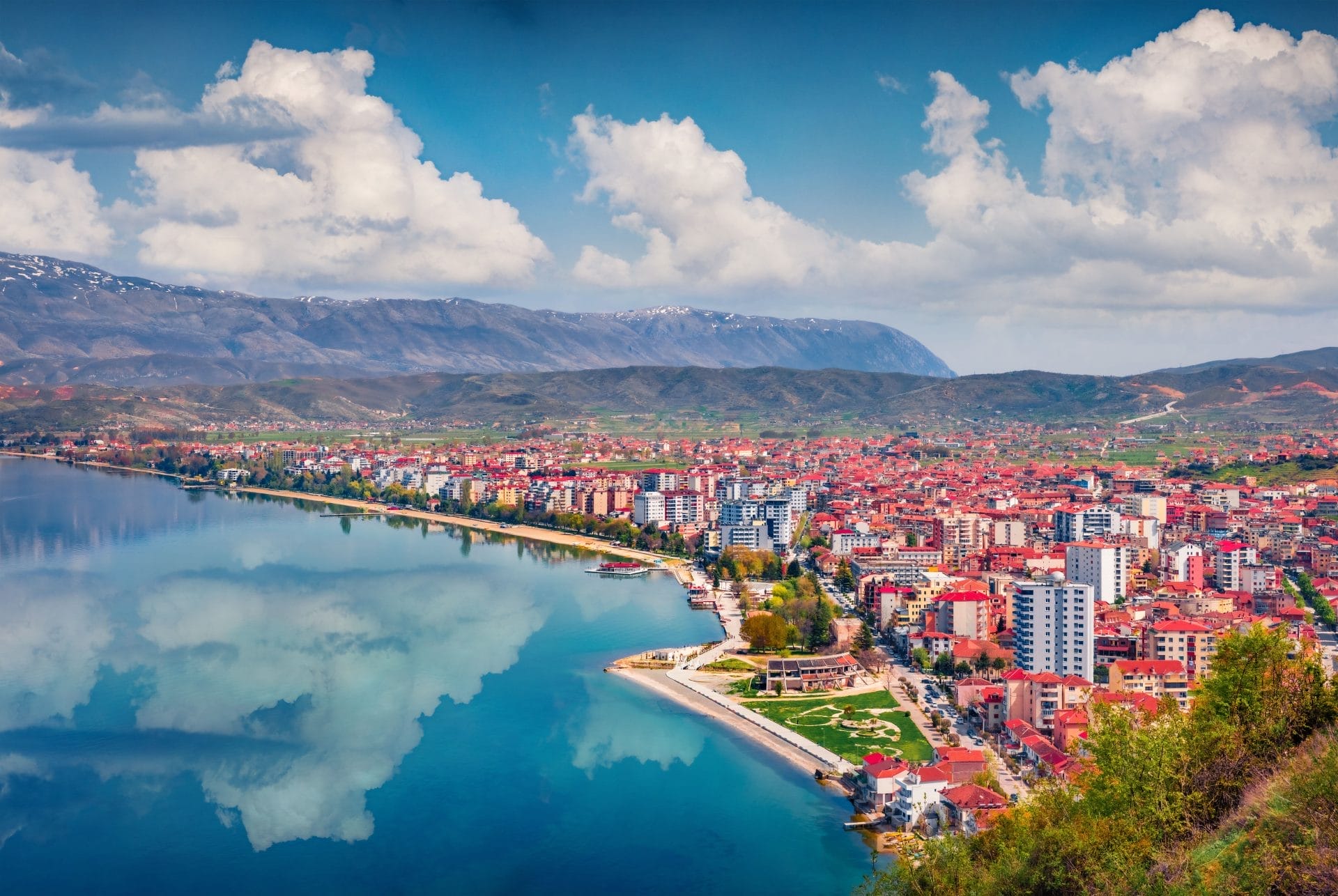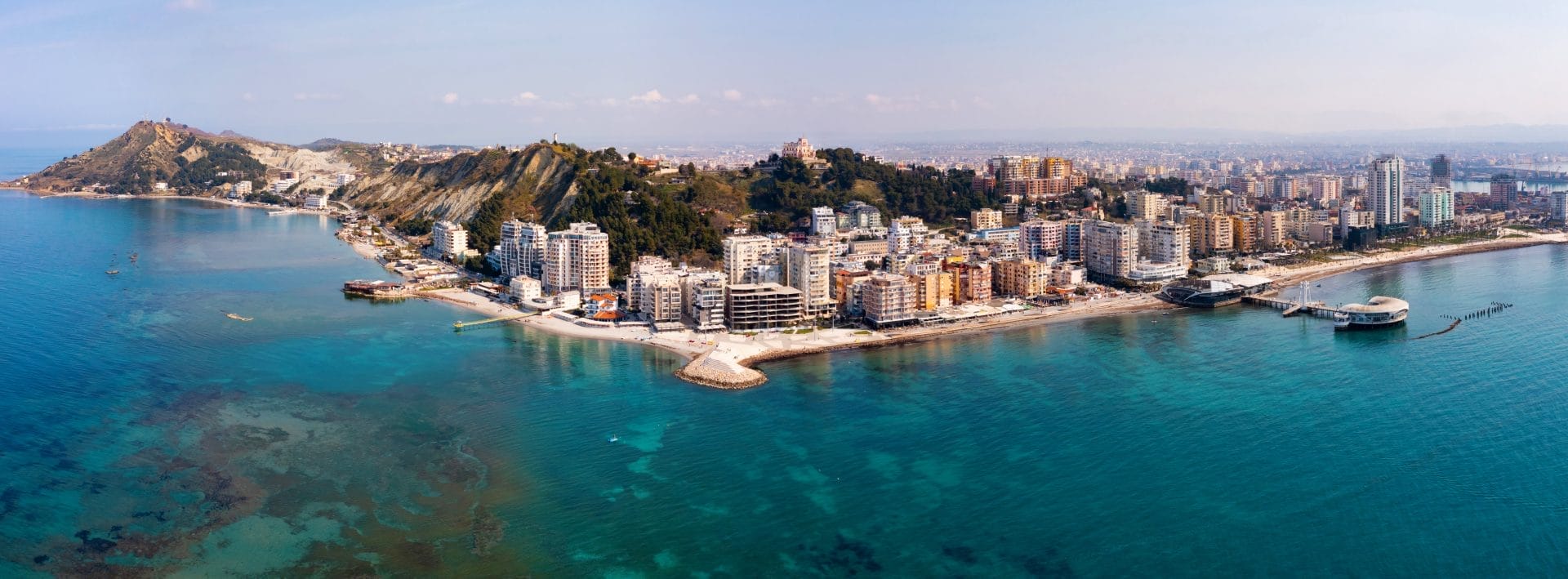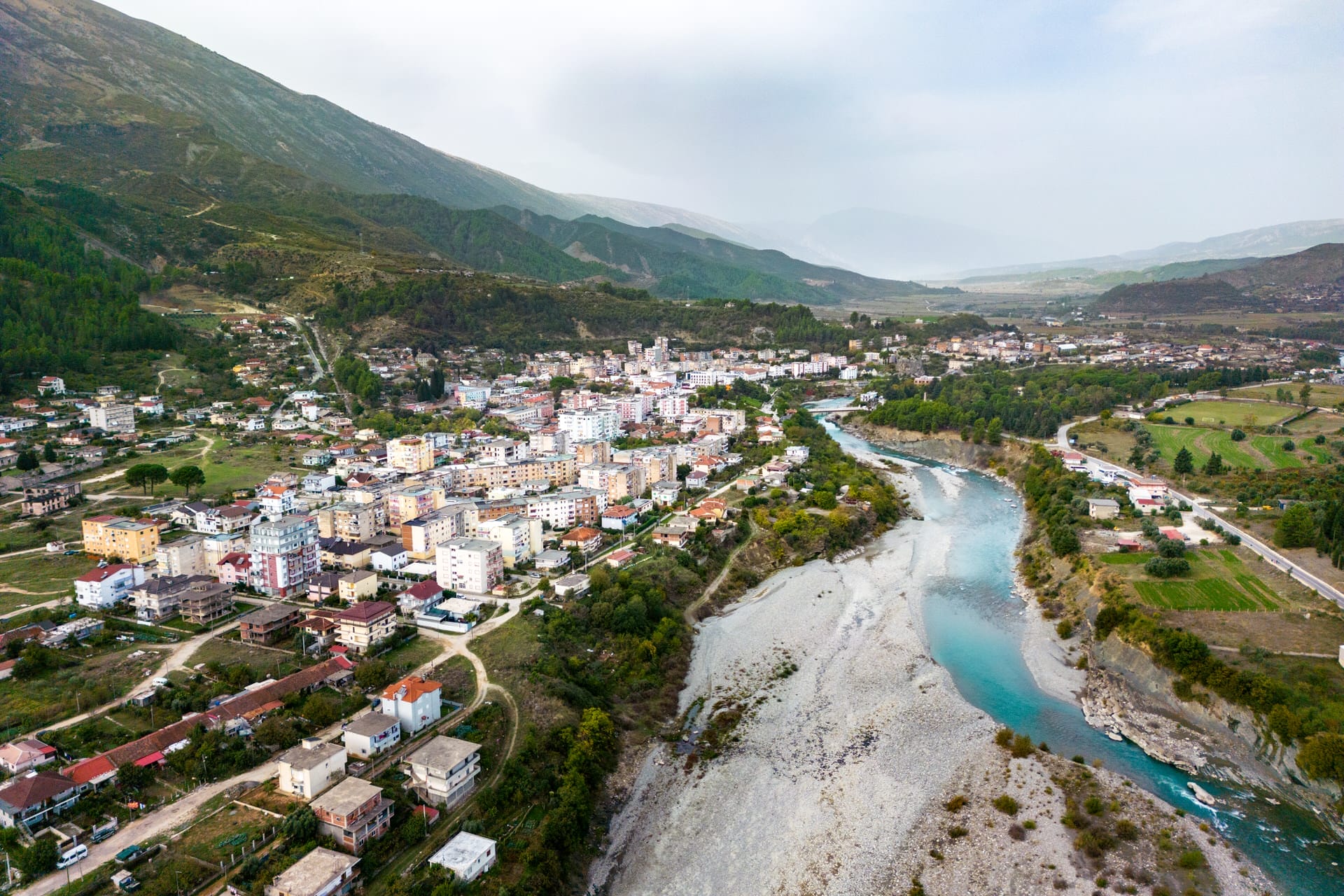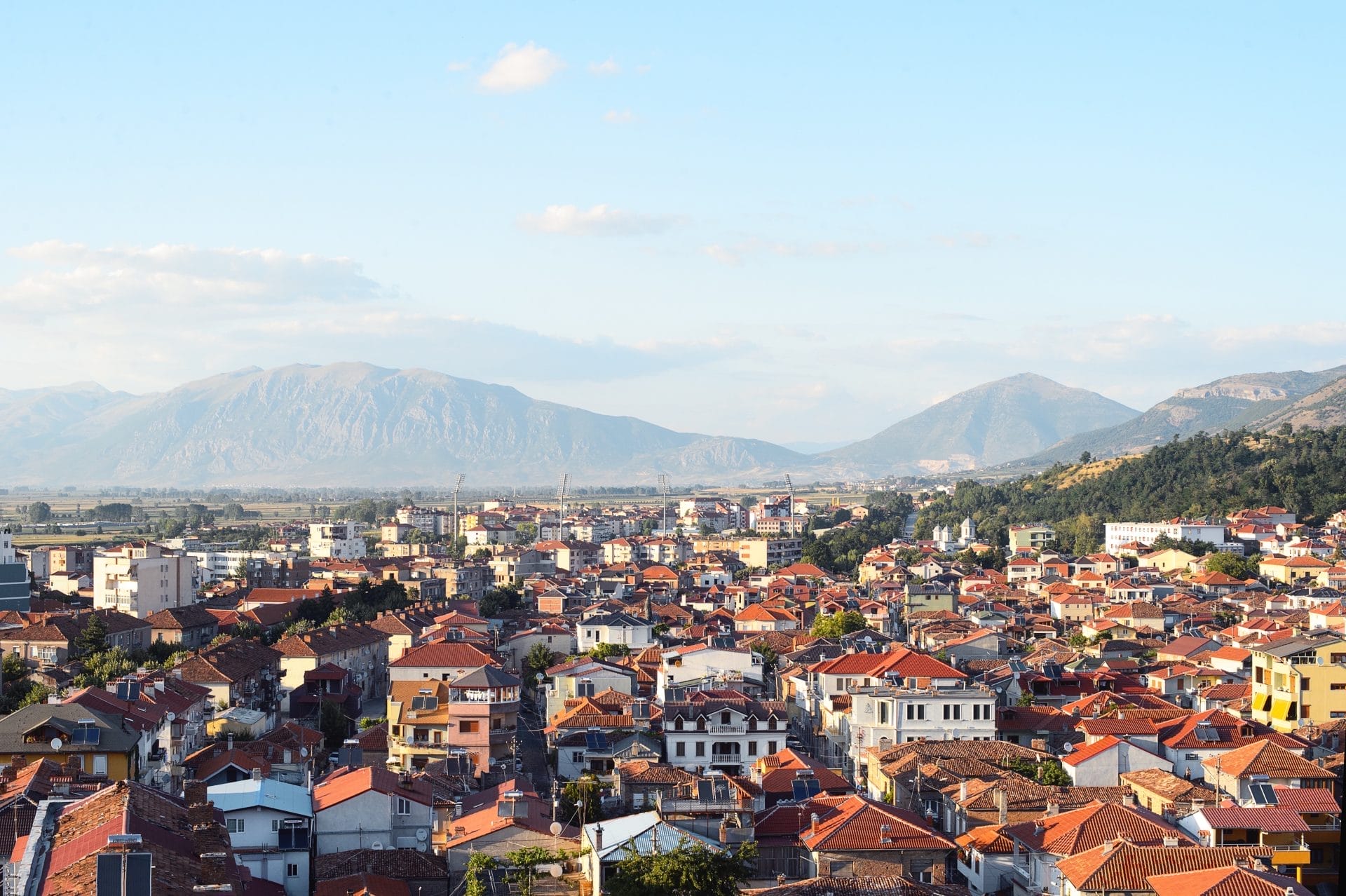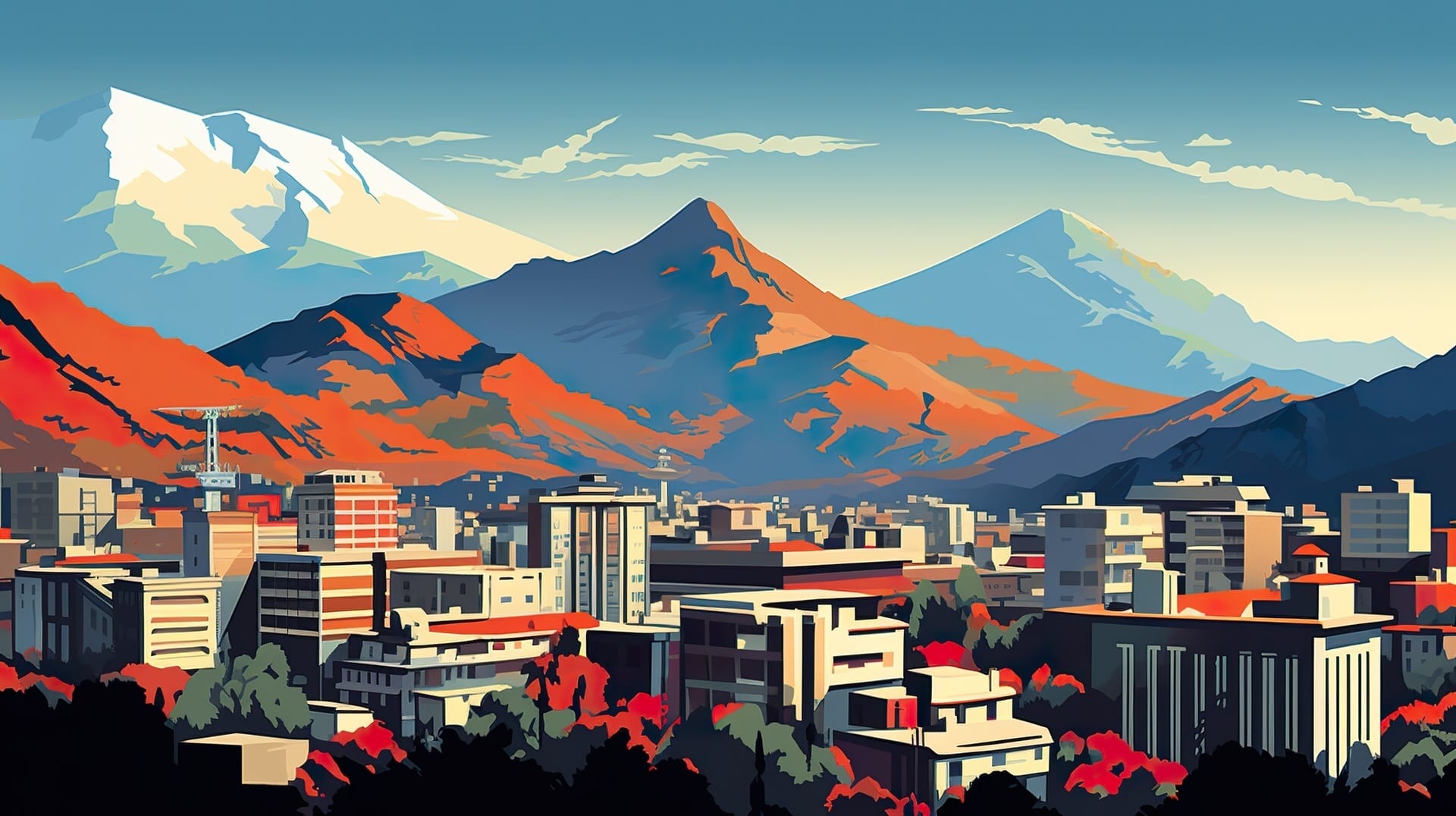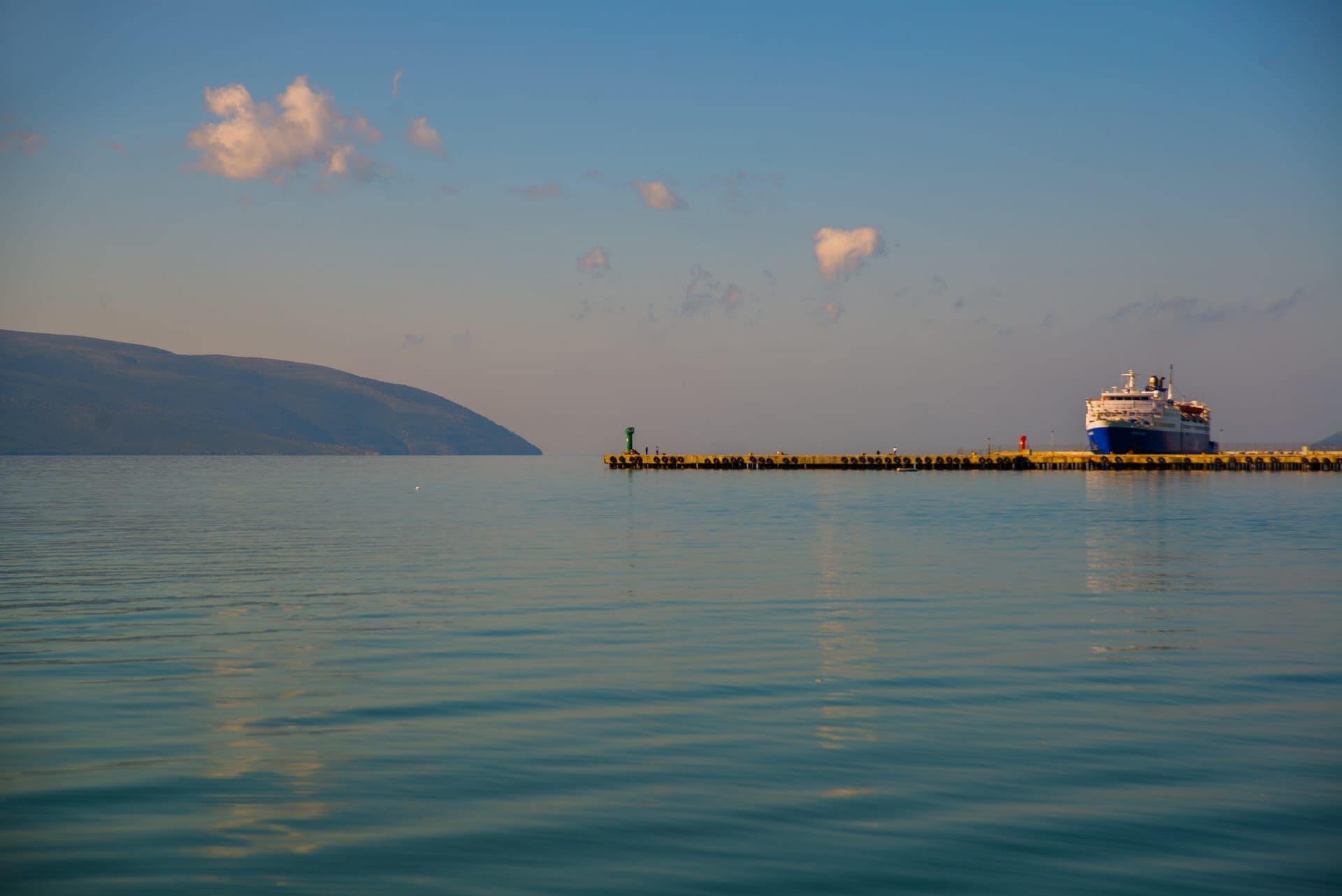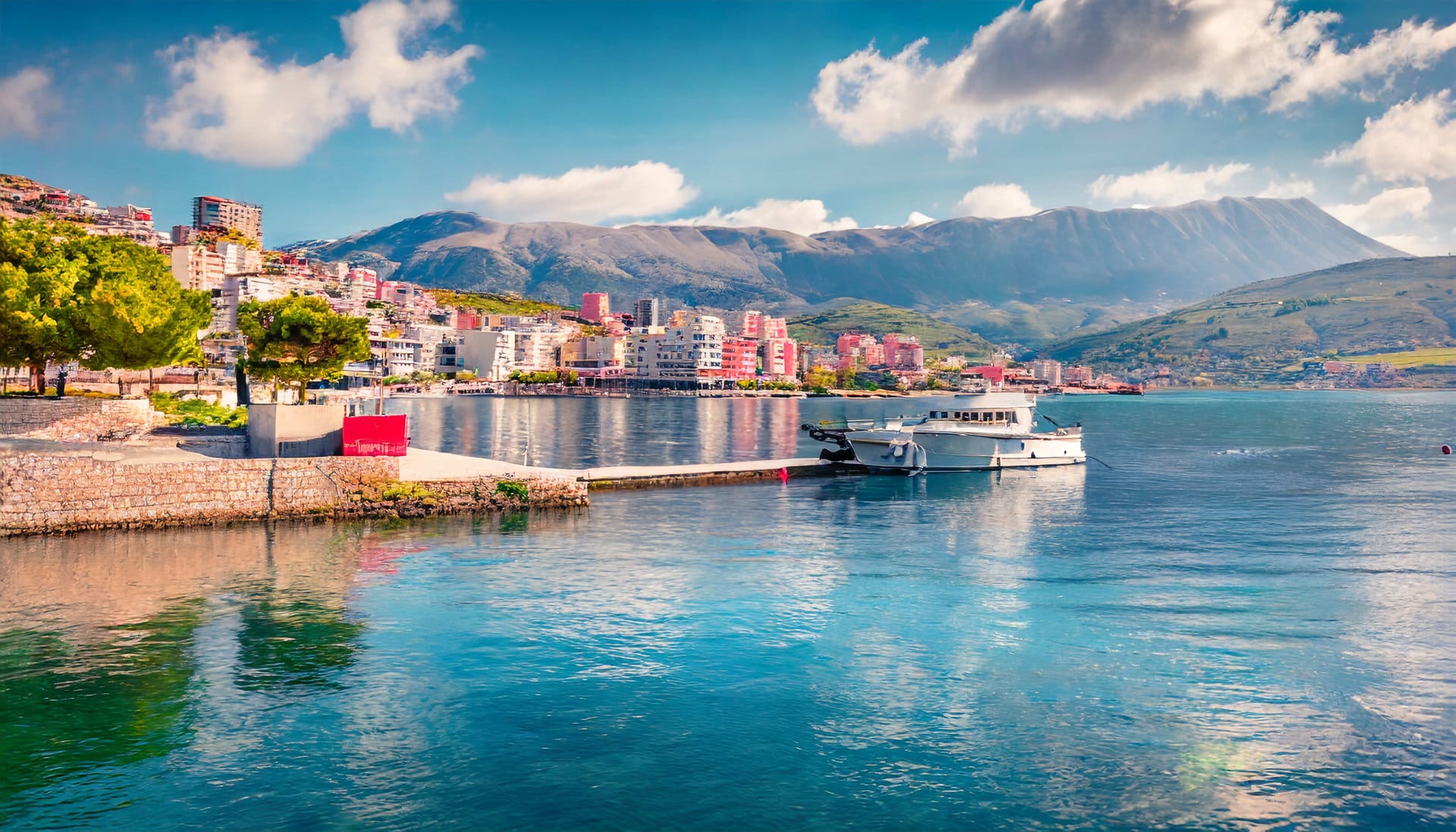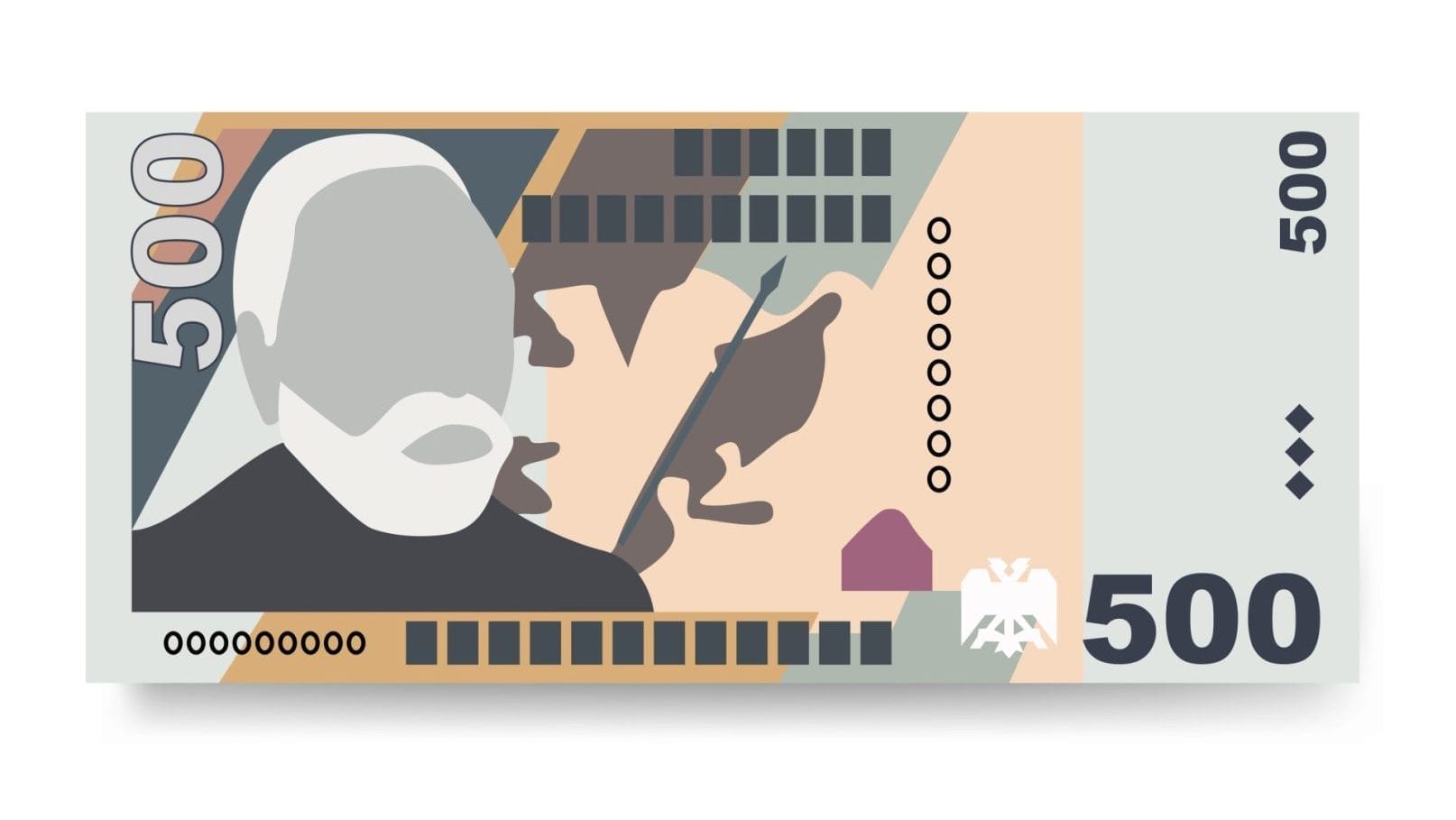
Historical Significance
With a history stretching back to the 4th century BC, it is a testament to Albania’s diverse history, showcasing influences from Roman, Byzantine, and Ottoman civilizations.
The castle, locally known as Kalaja, has been a significant stronghold since its inception. Initially built in the 4th century BC, it faced destruction by the Romans in 200 B.C., only to be strengthened and rebuilt in subsequent centuries, notably under the Roman Emperor Theodosius II in the 5th century, Emperor Justinian I in the 6th century, and during the 13th century under Michael I Komnenos Doukas.
Strategically located along the main east-west route through Albania, the fortress offered a key vantage point for controlling movement. Its early Illyrian settlers took advantage of the natural elevated position, surrounded by gorges on three sides, to create a virtually impenetrable fortification.
The plateau site also proved favorable for urban development within the castle walls. At its peak in the 18th century, the fortress was home to over 6,000 inhabitants, creating a castle town.
Architectural Marvel
As it stands today, the fortress encompasses a large area, reflecting the capacity to house a significant portion of the city’s inhabitants during various periods. Notably, most of the existing structures within the castle were constructed in the 13th century, and their unique architectural style has led to their preservation as cultural monuments.
The most striking feature is the imposing surrounding wall, which is over 1,000 meters long, 10 meters high, and 5 meters thick in some sections. The east entrance, built in the 13th century, features a decorative carved corbel arch flanked by two towers.
Within the walls, typical Ottoman-style housing prevailed, with characteristic red-tiled roofs and overhanging timber balconies. The winding cobblestoned alleys follow the natural contours of the hill.
Byzantine architecture is also prominent in the castle’s 24 churches, with The Church of the Dormition of St. Mary boasting 17th-century frescoes. Three mosques were later added after Ottoman rule was established.
Cultural Mosaic
Berat Castle is not just an architectural wonder but also a living museum. The citadel area is dotted with numerous Byzantine churches, mainly from the 13th century, and several mosques built during the Ottoman era, which began in 1417. This mix of religious buildings exemplifies the coexistence of different religious and cultural communities over centuries.
The Church of St. Mary of Vllaherna houses an icon museum featuring works by renowned 16th-century painter Onufri. His bold style revolutionized Orthodox Christian iconography. The King Mosque within the castle walls also contains noteworthy decorative interior paintings.
These sites provide a window into the artistic movements and multi-faith communities that have flourished within the fortress over generations.
Life Within the Walls
Remarkably, the castle is still inhabited today. The castle town, Kala, houses around 100 families living in traditional Ottoman-era houses, offering visitors a unique glimpse into the daily life within this historic fortress.
As you wander through the narrow, winding alleys, you may encounter locals drawing water from antique pumps or observe old women sipping coffee on their porches – scenes that seem untouched by centuries of change. The authentic atmosphere transports you back in time.
Residents have worked to preserve and maintain their homes within the castle. In some houses, families have lived for over 500 years, passing them down through generations. This living heritage adds to the richness of the experience.
Stunning Vistas
Berat Castle provides breathtaking views of the city below, mainly known as “The City of a Thousand Windows” due to the distinctive white Ottoman houses cascading down the hillside.
Looking out from the castle ramparts, you can take in panoramas of the river Osum winding through the valley below and the distant slopes of Mount Tomorr rising in the south.
As night falls, the castle’s illuminated stone walls create a magical ambiance, perfect for reflecting and appreciating its long history. The scenery takes on a timeless, almost ethereal beauty.
Artistic Heritage
The Onufri Museum, nestled within the castle grounds, is named after the famous 16th-century icon painter who revolutionized Orthodox Christian iconography through his bold use of color and minimalist style.
The museum houses Onufri’s works along with a collection of stunning religious art, offering insights into the artistic and religious history of the region. Visitors can admire original works by Onufri, along with ecclesiastical artifacts dating back to the Byzantine period.
As one of Albania’s most prized artistic treasures, the Onufri Museum provides a portal into the castle’s cultural heritage through the ages.
Archaeological Treasures
Recent archaeological excavations within the castle walls have uncovered artifacts from various periods, adding to our knowledge of the site’s history.
Finds include Hellenistic ceramics, medieval jewelry and religious relics, Roman coins, and ancient Illyrian water wells – all helping to piece together the legacy of this multi-era settlement. The discoveries reveal the richness yet to be uncovered.
Testament to Longevity
Berat Castle is one of the oldest continuously inhabited fortresses globally, with over 2,400 years of continuous human habitation. This longevity adds to its historical and cultural significance and allure.
The determination and perseverance of generations maintained and preserved the fortress over the centuries and through various empires. This unbroken history lineage is a large part of what makes Berat Castle genuinely exceptional.
The residents uphold this living heritage today and carry the legacy of adapting yet preserving their legendary home.
Symbolic Representation
The castle’s national importance is recognized through its depiction on the Albanian ten lekë coin, issued in 1996, 2000, and 2013. This honor further cements Berat Castle as a symbolic treasure of Albania.
UNESCO World Heritage Status
According to their outstanding universal value, UNESCO recognizes Berat and Gjirokastra as World Heritage Sites. The towns exemplify the diversity of urban societies in the Balkans and their long-standing ways of life, with Berat showcasing a more independent lifestyle linked to its handicraft and merchant functions.
This prestigious distinction spotlights Berat Castle as a superlative example of a fortified historic town that has endured over 24 centuries.
Planning Your Visit
Berat Castle is open year-round and can be visited anytime during daylight hours. Here are some tips to make the most of your visit:
- Wear comfortable walking shoes; the cobblestone alleys and steep paths require moderate physical fitness.
- Allow 2-3 hours to explore the castle grounds and sites fully. Move at a leisurely pace to soak in the atmosphere.
- Bring a camera to capture the magnificent views from the castle ramparts over Berat town and the Osum Valley.
- Respect residents by keeping noise down while walking through the residential areas.
- For overnight stays, guest houses and home rentals are available within the fortress walls for enhanced immersion.
- The Ethnographic Museum is worth a visit to view displays of traditional Albanian crafts and culture.
- Stop for a break at one of the cafes near the entrance to try local beverages like Albanian coffee or raki.
A journey to Berat Castle makes for an unforgettable glimpse into Albania’s storied past and vibrant present. Wandering through this timeless citadel, you’ll encounter fascinating layers of change and continuity that vividly bring this nation’s rich history and culture to life.

